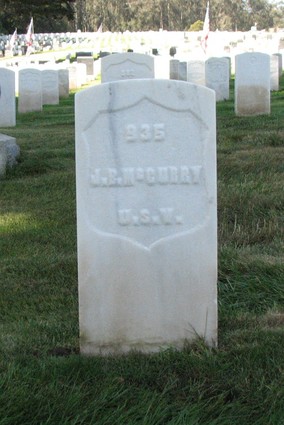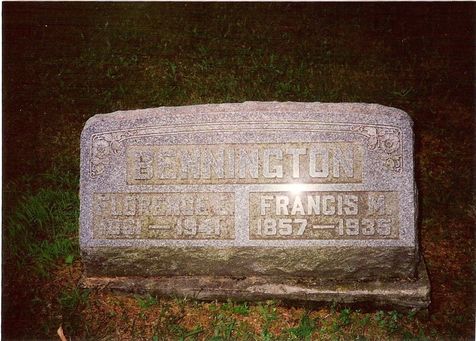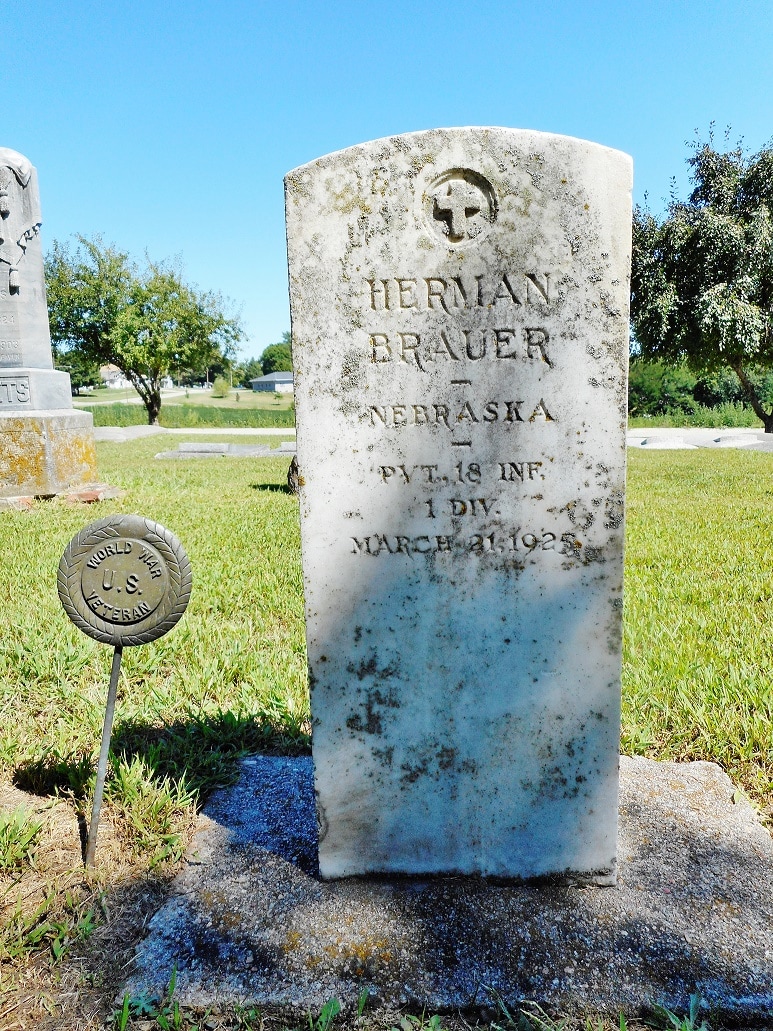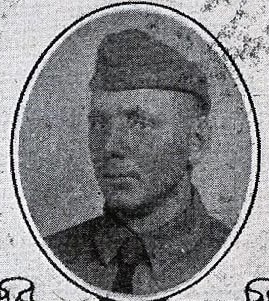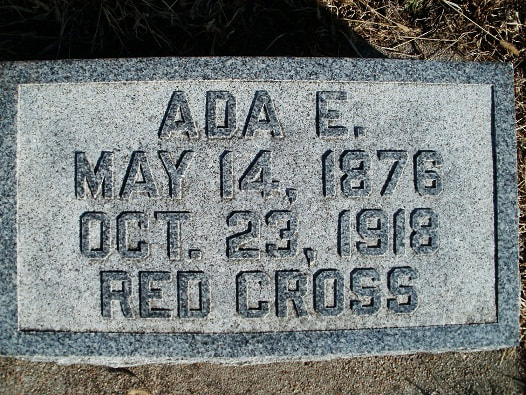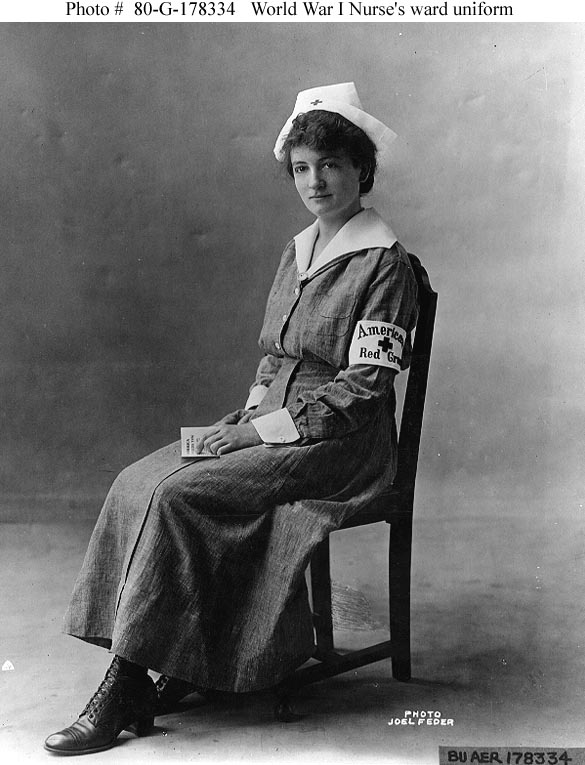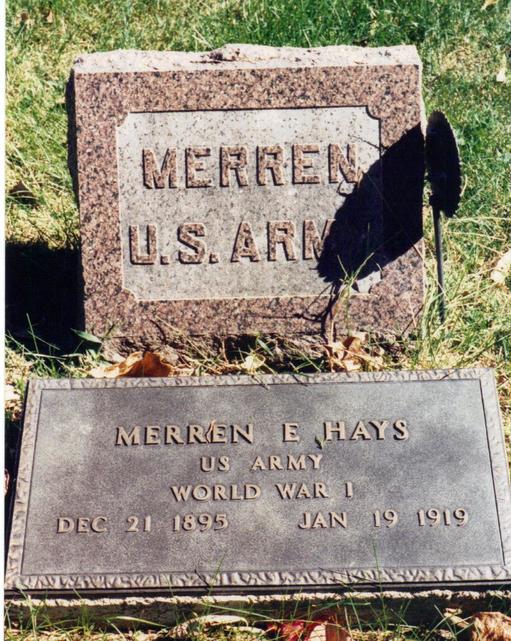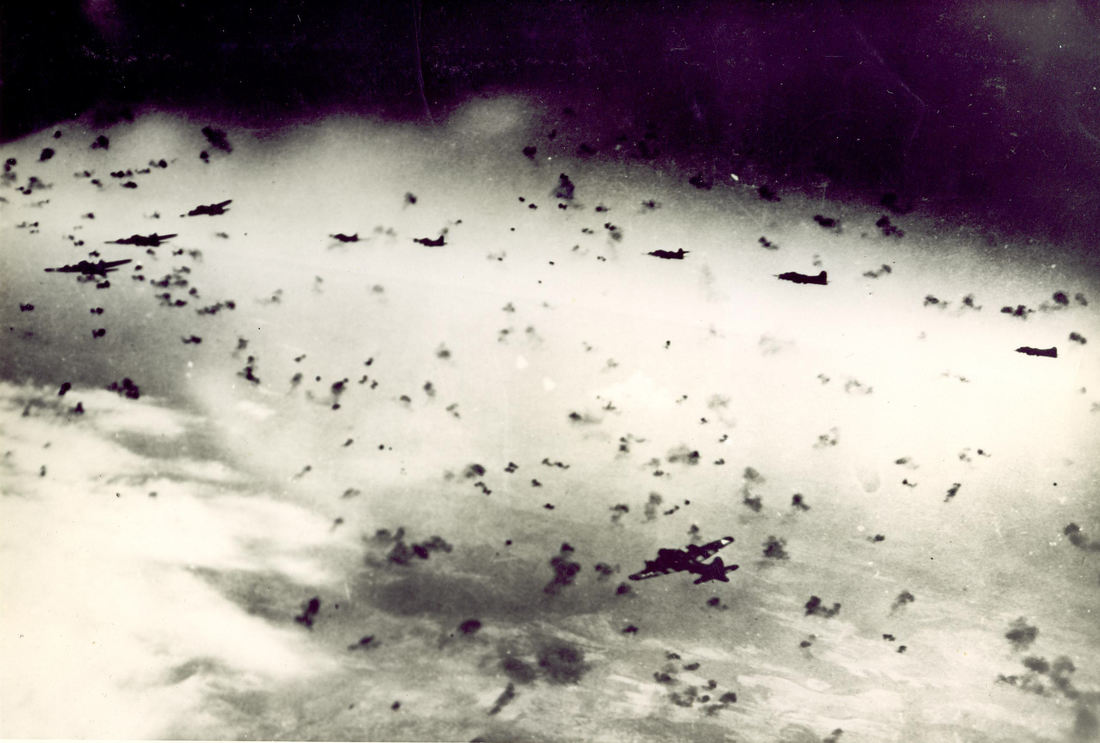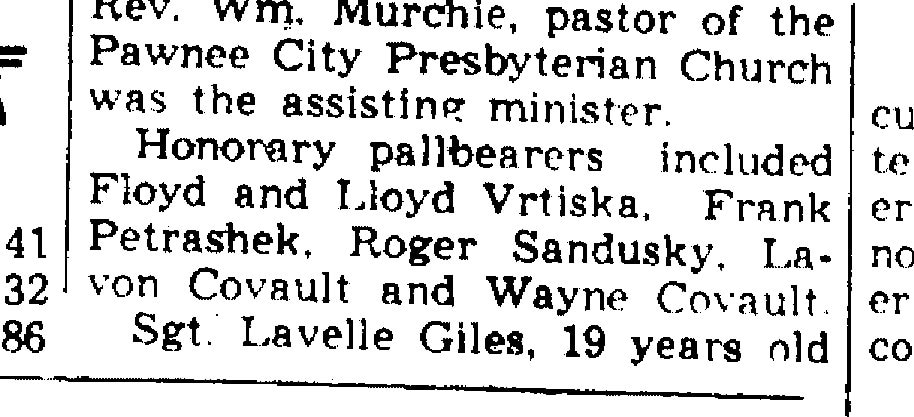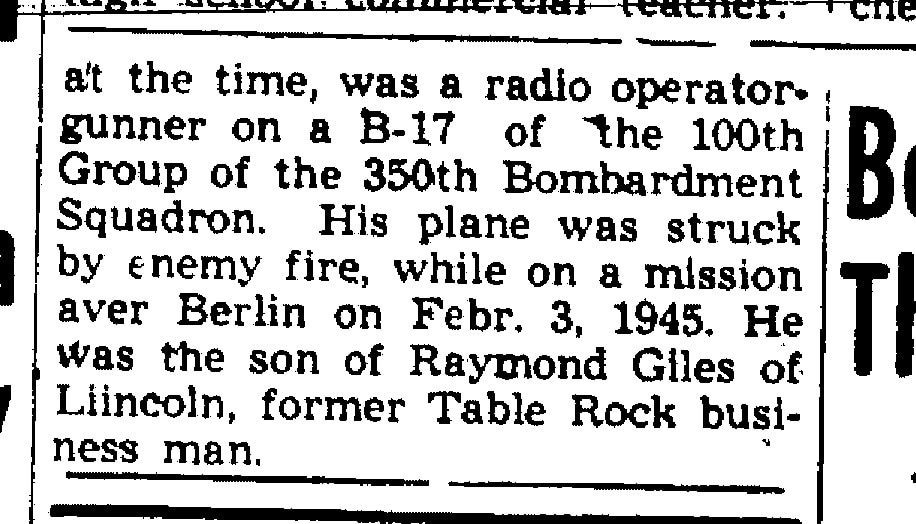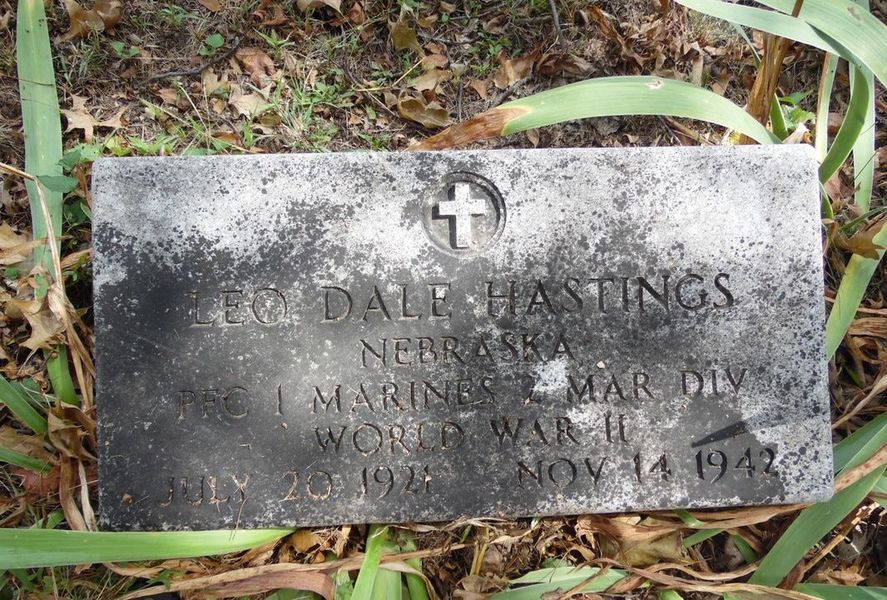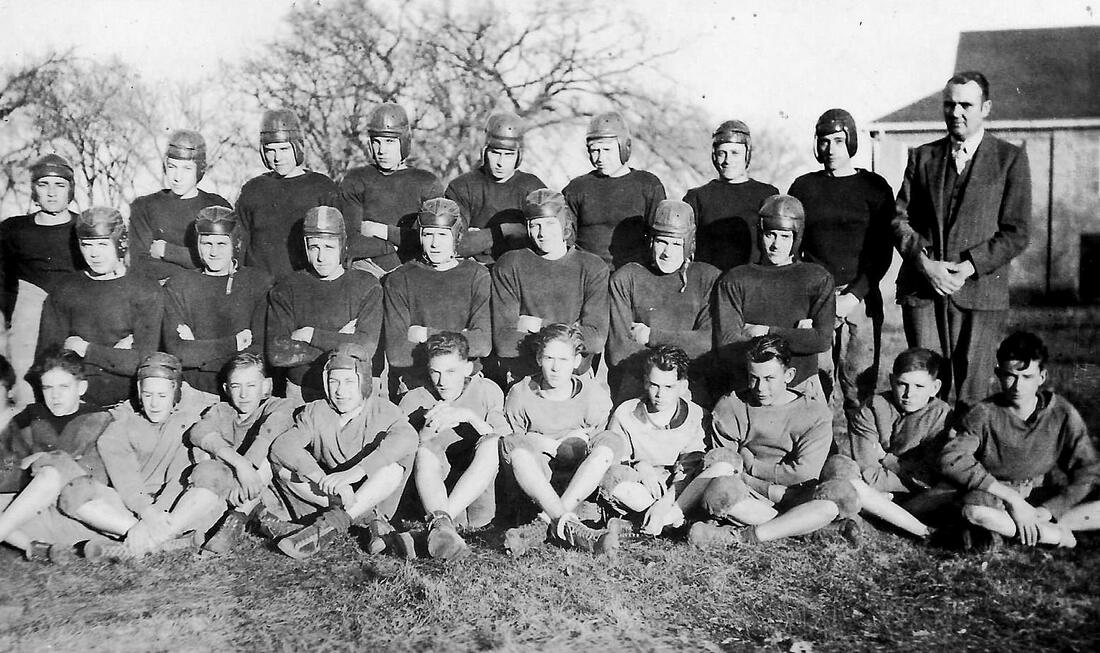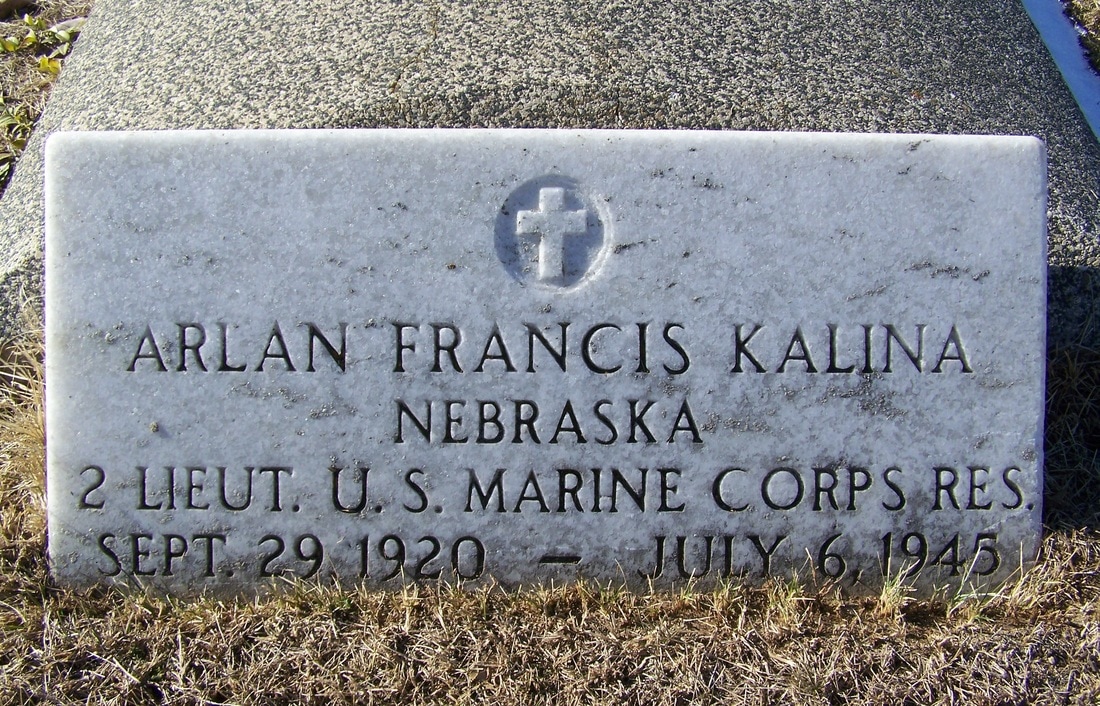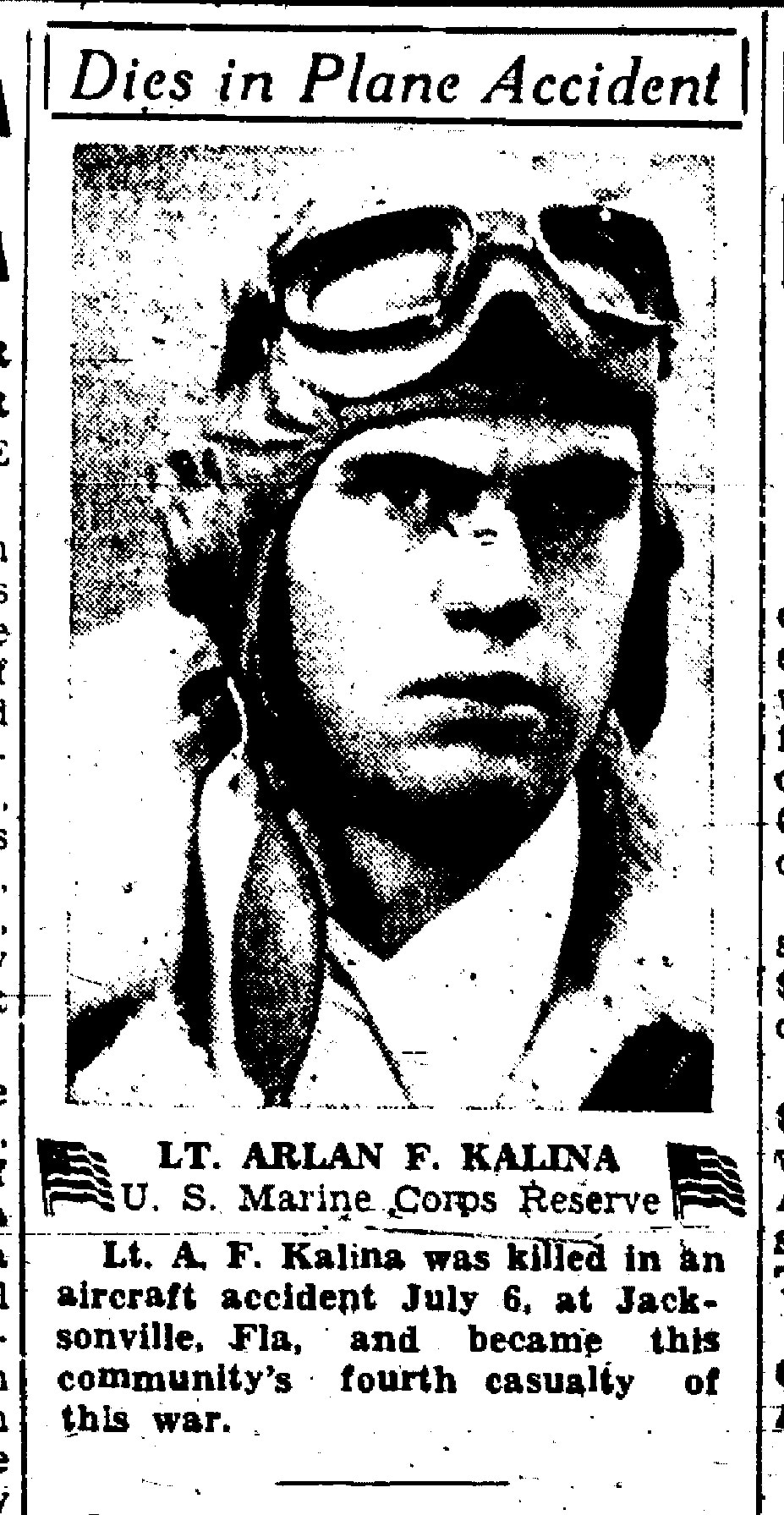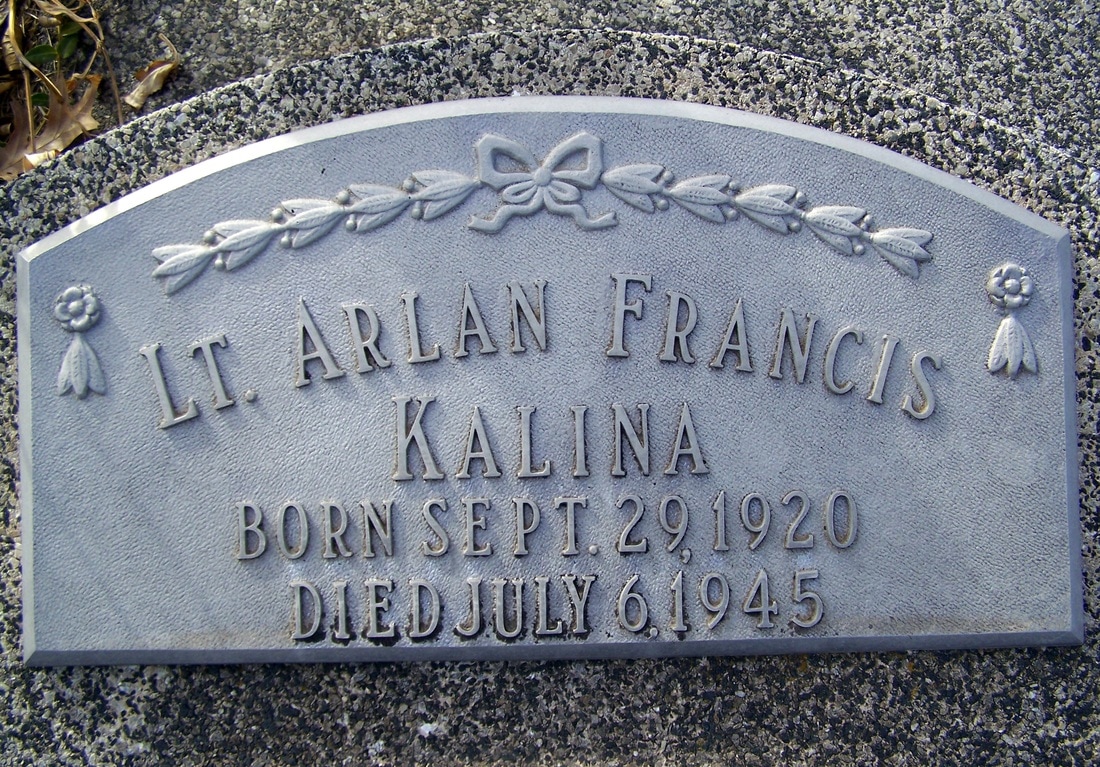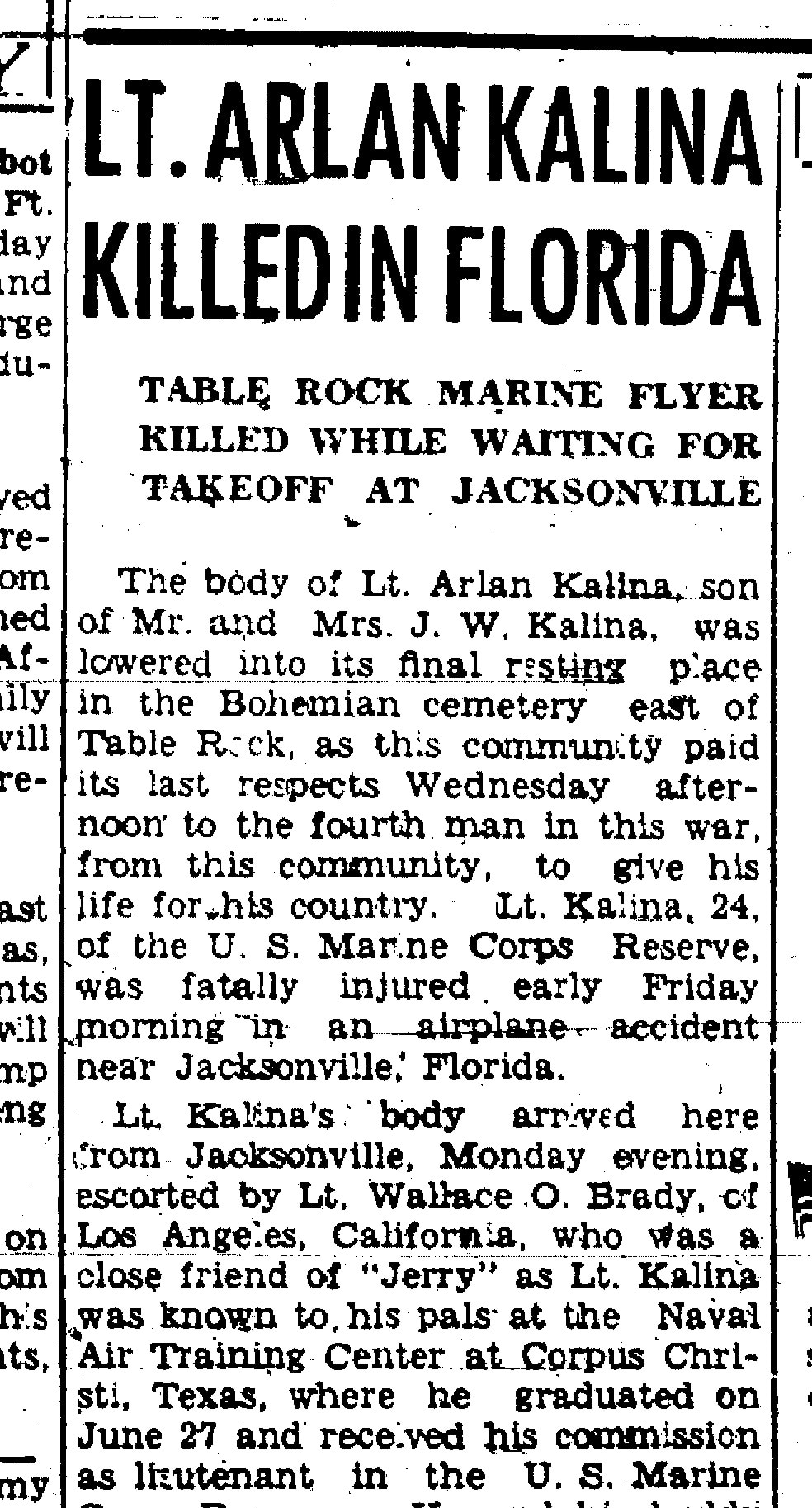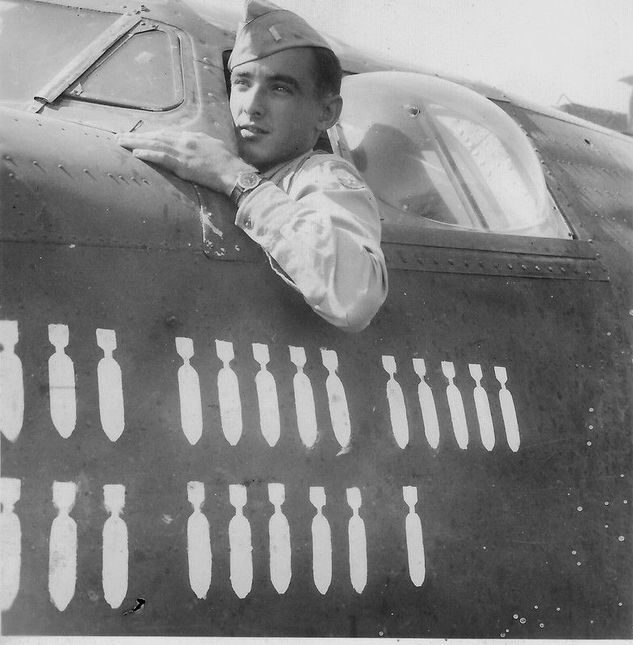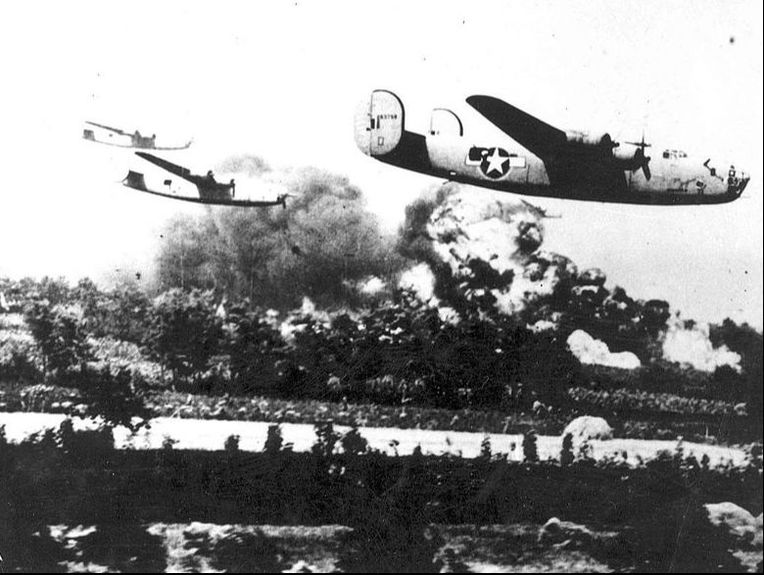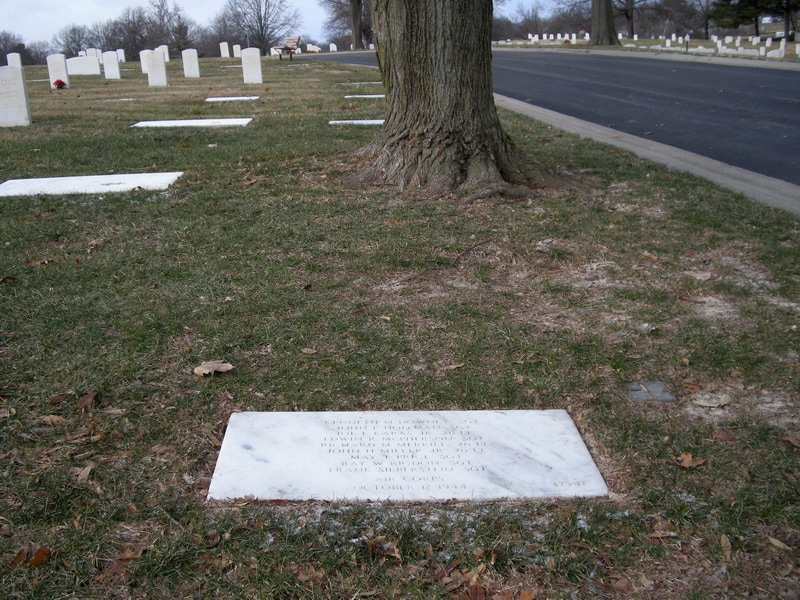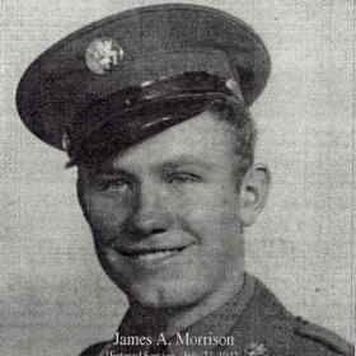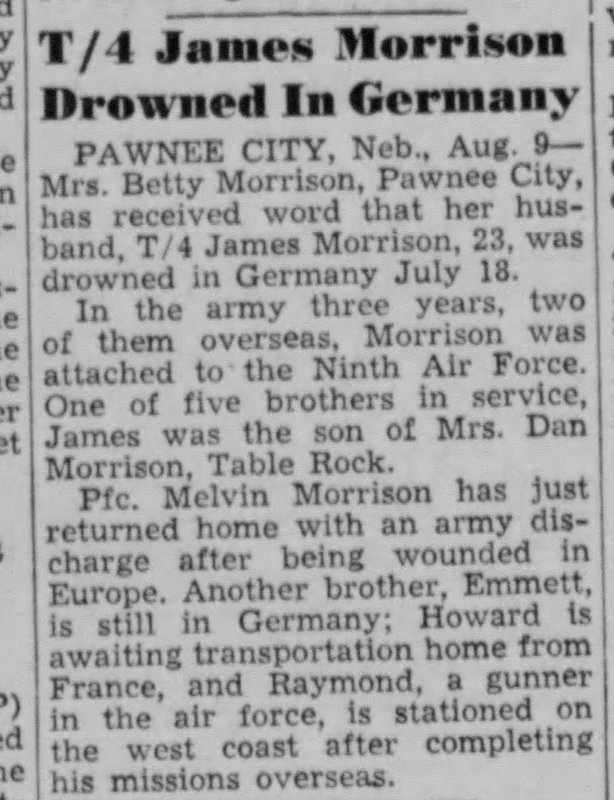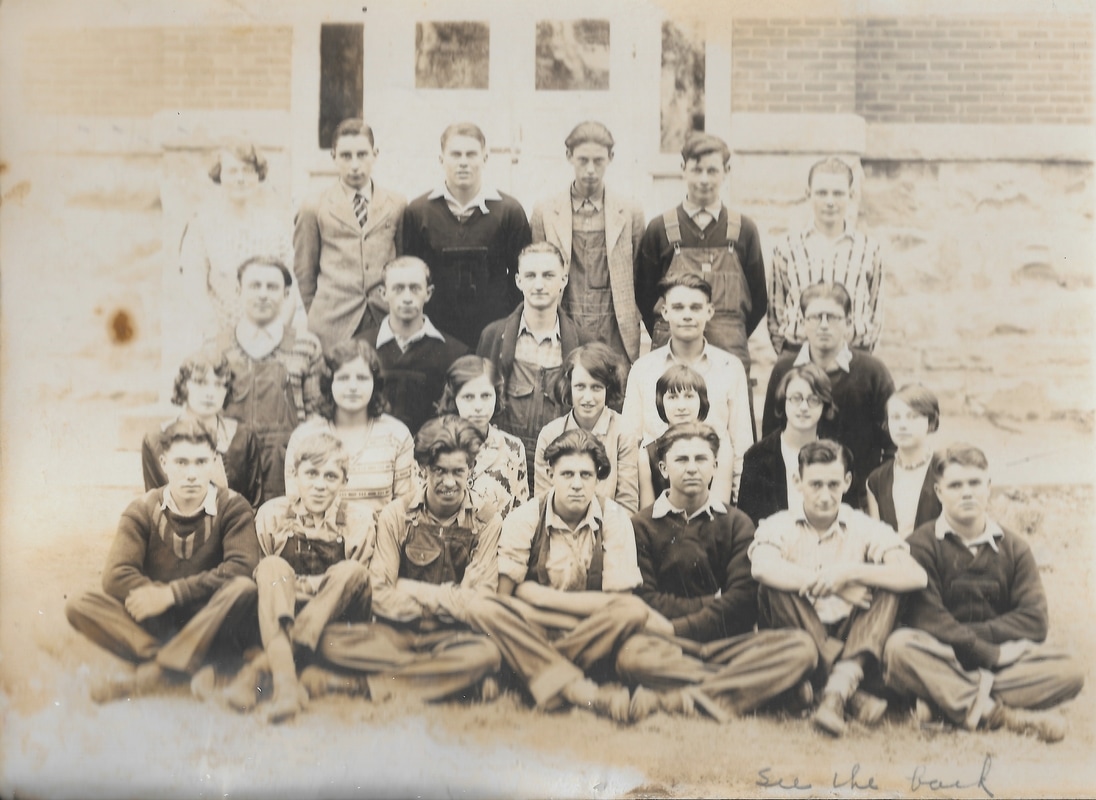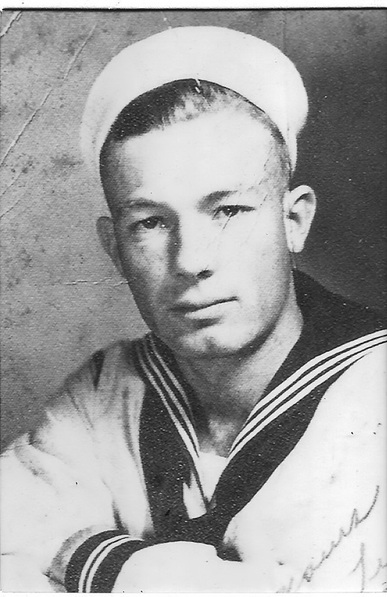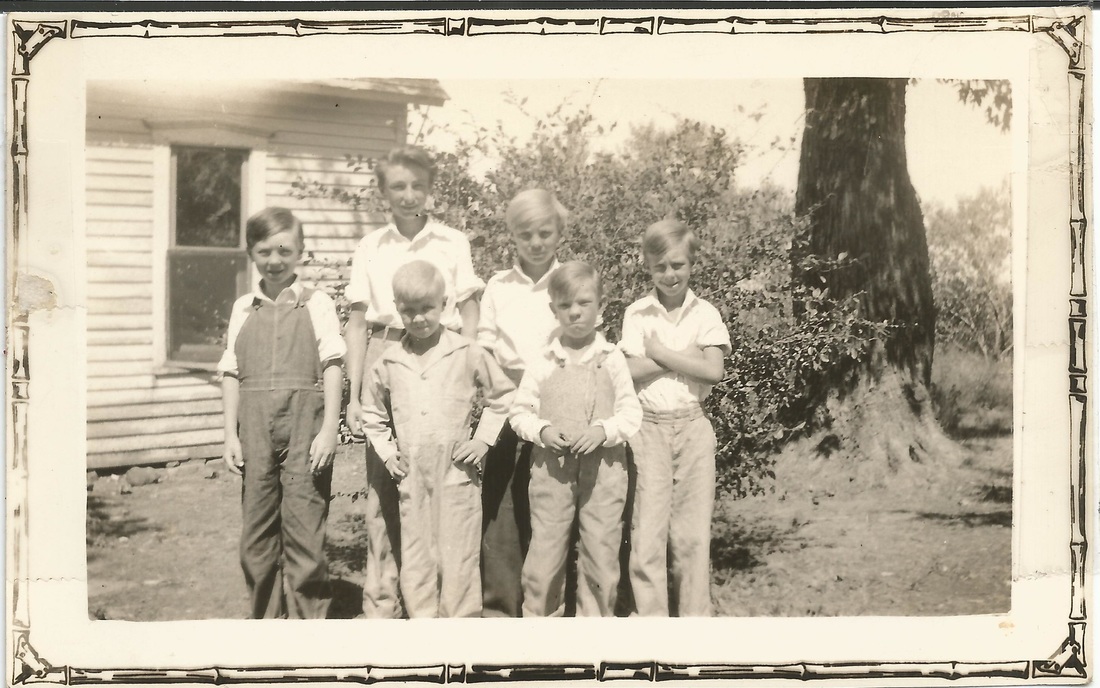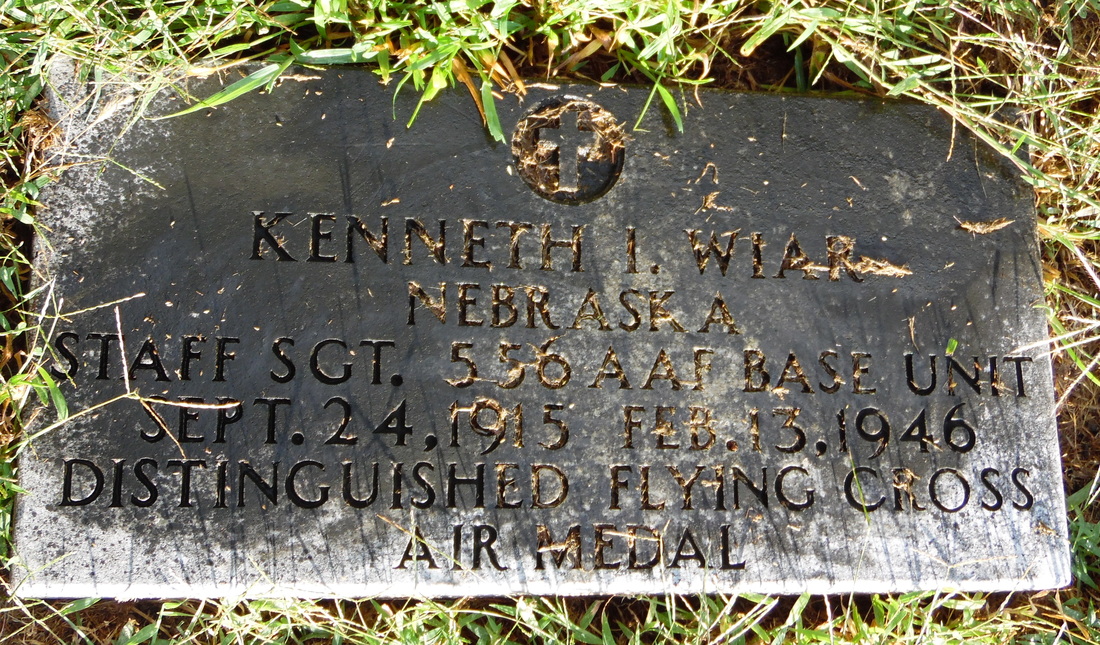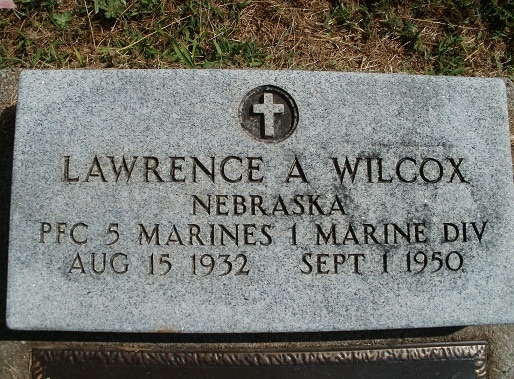those who fell in war
the gold star list
THEY WERE FROM TABLE ROCK AND/OR ARE BURIED
IN THE TABLE ROCK CEMETERY
first, a list of the men (and a woman). then, below, are their stories.
civil war
1862 - william mcneal -- drowned at a river crossing near ft. riley, ks
PHILIPPINE INSURRECTION (SPANISH-AMERICAN WAR)
1900 JAMES B. MCCURRY
WORLD WAR i
1918 - LEA BROWN, PNEUMONIA FOLLOWING INFLUENZA
1918 - RALPH BENNINGTON, MUSTARD GAS
1918 - HUGH DEHART, KILLED IN ACTION TRYING TO RESCUE ANOTHER SOLDIER
1918 - Ada fisher, red cross nurse, died of influenza
1918 - RALPH FISHER, PHARMACIST'S MATE ON HOSPITAL SHIP, INFLUENZA
1918 - mason fisher, water tender for the navy, drowned
1918 - CHARLES SCHICK, UNSTATED DISEASE
1919 - MERREN HAYS, MUSTARD GAS
1919 - JOHN MICHAL, EXPLOSION
1919 - William a. rush, killed in action
1925 - hERMAN BRAUER - VICTIM OF SHELL SHOCK & GASSING COMMITTED SUICIDE
WORLD WAR ii
1942 --LEO HASTINGS, KILLED IN ACTION ON GUADALCANAL
1942 - CLARENCE MORTON, PRISONER OF WAR OF THE JAPANESE (corregidor)
1942 - LAWRENCE WARD, SHIP SANK DURING BATTLE OF GUADALCANAL
1942 - LEO HASTINGS, KILLED IN COMBAT ON GUADALCANAL
1944 - RONALD BOSTON, PRISONER OF WAR OF THE JAPANESE (bataan)
1944- JOE KARAS, JR., PILOT OF B-24 BOMBER CRASH IN RAID OVER VIENNA
1945 - LAVELLE GILES, CREW OF B-17 BOMBER CRASH IN RAID OVER GERMANY
1945 - ARLAN KALINAS, PLANE CRASH AT FLORIDA BASE
1945 - JAMES MORRISON, DROWNING ACCIDENT IN GERMANY
1945 - ANTHONY NEDVED, KILLED IN ACTION IN BATTLE ON LUZON ISLAND, PHILIPPINES
1946 - KENNETH WIAR, BOMBER CREW, FORMER PRISONER OF WAR, AWARDED
DISTINGUISHED FLYING CROSS, COMMITTED SUICIDE
KOREAN WAR
1950 - LAWRENCE WILCOX, KILLED IN ACTION, KOREA
READ THEir STORIES
CIVIL WAR
WILLIAM MCNEAL (1840-1861)
|
The riderless horse that led the procession for the dedication of Private McNeal's tombstone. The Sons of Union Veterans of the Civil War dedicated the military tombstone on May 27, 2017. McNeal died in the Civil War in 1862, at age 20.
|
philipine Insurrection
(Sequel to the spanish-american war)
james b. mccurry
A hale and hearty man with a fiancee heads to Manila with others of Table Rock, serves in combat, dies of dysentery
WORLD WAR I
Ralph Bennington (1889-1918)
Corporal Bennington, the dead speaks to us still. His voice mingles with many others who slumber in France. |
here, an obituary written in 1921, upon the occasion of the return of ralph's body to table rock. below, a letter from his mother in 1918 upon learning about ralph's death.
TABLE ROCK ARGUS, June 10, 1921.
Ralph Bennington, Died in France, Buried Here.
The only son of Mr. and Mrs. F. M. Bennington was born in Table Rock, Pawnee county, Nebraska,March 6, 1889. A year and a half later he moved with his parents to Long Point, Livingston county, Illinois, where he resided until he was nine years of age, when the family returned to Table Rock,Neb.
At the early age of sixteen he graduated from the Table Rock high school. The following two years were spent at various vocations, and at eighteen years of age he entered the Railway Mail Service, wherein he was still employed when called to the colors.
Corporal Bennington left for Camp Funston with the first contingent from Custer county, September
21, 1917 and remained here until May 22, 1918. He was placed in Co., 355th Infantry. During the
eight months at camp, he was employed in the mail service and was ranked second best at that
work.
On December 2, 1917 he came home on a ten day furlough, but he was ordered back to camp
inside of five days. During this short visit immediate relatives gathered for a family reunion, while
his many friends gave him a farewell surprise party. Little did the relatives and friends realize that
this would be the last time they would meet their dear one. From Camp Funston Corporal
Bennington was transferred to Camp Mills, Long Island. He left there June 1st to cross the Atlantic;
being accompanied by Carl Jackson. The two were together as comrades from the time they left
here until Ralph was taken to the hospital.
On the way across the ocean he wrote a long letter to home folks describing his experiences and impressions.
He landed in England June 17th and two weeks later sailed for France. His epistles from that sunny land were many. In one particular letter, he regretted his employment as company clerk, because he yearned for the trenches. He maintained that one as able bodied as he, was a slacker unless he exchanged with a weaker man; the weaker one doing the office work and the stronger one to the trenches. His wish was granted; and on July 20, 1918 he received mustard gas burns internally. He was taken to Base hospital No.
116 where he remained till death. During his illness double pneumonia developed, this was followed by "emphysema" which finally terminated in his death September 28, 1918 at the age of 29 years, 6 months and 22 days.
His nurse, Florence M. Trudger writes that he endured his suffering like a brave patient soldier. In a recent letter from Carl Jackson, the writer states that on July 26th he and Ralph had gone to the front together, but at the close of the battle he was unable to find him.
Corporal Bennington united with the Methodist Episcopal church, of Table Rock, Nebraska at the
tender age of ten years, and has ever since endeavored to live the Christian life. He was true to
his ideals; noble in his inspirations and ever ready to lend a helping hand. From early childhood
one of his strong characteristics was an affectionate, winning disposition, which made him friends
everywhere. In his self forgetfulness those who won his love had the first place in his plans.
The bereaved who mourn his loss are his parents, Mr. and Mrs. F. M. Bennington and the following
five sisters: Mrs. Emma Hanson of Denver, Colo., Mrs. Hattie Robertson of Mason City, Nebr., Mrs.
Lela Roecking, Howith, Estella and Ruth all of Mason City, Nebraska, and other relatives and
many friends. May he who is loved cheer the grief stricken.
Corporal Bennington, the dead speaks to us still. His voice mingles with many others, who slumber
in France. This is the message that comes across the Atlantic.
Ralph Bennington, Died in France, Buried Here.
The only son of Mr. and Mrs. F. M. Bennington was born in Table Rock, Pawnee county, Nebraska,March 6, 1889. A year and a half later he moved with his parents to Long Point, Livingston county, Illinois, where he resided until he was nine years of age, when the family returned to Table Rock,Neb.
At the early age of sixteen he graduated from the Table Rock high school. The following two years were spent at various vocations, and at eighteen years of age he entered the Railway Mail Service, wherein he was still employed when called to the colors.
Corporal Bennington left for Camp Funston with the first contingent from Custer county, September
21, 1917 and remained here until May 22, 1918. He was placed in Co., 355th Infantry. During the
eight months at camp, he was employed in the mail service and was ranked second best at that
work.
On December 2, 1917 he came home on a ten day furlough, but he was ordered back to camp
inside of five days. During this short visit immediate relatives gathered for a family reunion, while
his many friends gave him a farewell surprise party. Little did the relatives and friends realize that
this would be the last time they would meet their dear one. From Camp Funston Corporal
Bennington was transferred to Camp Mills, Long Island. He left there June 1st to cross the Atlantic;
being accompanied by Carl Jackson. The two were together as comrades from the time they left
here until Ralph was taken to the hospital.
On the way across the ocean he wrote a long letter to home folks describing his experiences and impressions.
He landed in England June 17th and two weeks later sailed for France. His epistles from that sunny land were many. In one particular letter, he regretted his employment as company clerk, because he yearned for the trenches. He maintained that one as able bodied as he, was a slacker unless he exchanged with a weaker man; the weaker one doing the office work and the stronger one to the trenches. His wish was granted; and on July 20, 1918 he received mustard gas burns internally. He was taken to Base hospital No.
116 where he remained till death. During his illness double pneumonia developed, this was followed by "emphysema" which finally terminated in his death September 28, 1918 at the age of 29 years, 6 months and 22 days.
His nurse, Florence M. Trudger writes that he endured his suffering like a brave patient soldier. In a recent letter from Carl Jackson, the writer states that on July 26th he and Ralph had gone to the front together, but at the close of the battle he was unable to find him.
Corporal Bennington united with the Methodist Episcopal church, of Table Rock, Nebraska at the
tender age of ten years, and has ever since endeavored to live the Christian life. He was true to
his ideals; noble in his inspirations and ever ready to lend a helping hand. From early childhood
one of his strong characteristics was an affectionate, winning disposition, which made him friends
everywhere. In his self forgetfulness those who won his love had the first place in his plans.
The bereaved who mourn his loss are his parents, Mr. and Mrs. F. M. Bennington and the following
five sisters: Mrs. Emma Hanson of Denver, Colo., Mrs. Hattie Robertson of Mason City, Nebr., Mrs.
Lela Roecking, Howith, Estella and Ruth all of Mason City, Nebraska, and other relatives and
many friends. May he who is loved cheer the grief stricken.
Corporal Bennington, the dead speaks to us still. His voice mingles with many others, who slumber
in France. This is the message that comes across the Atlantic.
december 27, 1918
a letter from ralph's mother to her brother
|
The 1921 obituary above gives a clear picture of Ralph's service. This letter by his mother after learning of his death gives a poignant picture of her gratitude for even the smallest of favors in the form of writing a letter and providing a little information. Here is the Argus article transcribed:
From a letter to her brother, James ("J. H.") Talbot. written by Mrs. Florence Bennington, we are permitted to publish the following in regard to her son, Ralph Bennington, who died in a hospital after having been gassed in battle. |
HERMAN BRAUER (1893-1925)
"So he was absolutely unaccountable for his death, as he had been a sufferer from shell shock...He is just as much a hero as those who died in France. His life was given for his country and his death is a result of the war." Pawnee Chief newspaper.
john LEAROY (Lea) BROWN (1894-1918)
He died of pneumonia. As his obituary so truly said:
Lea gave his life for his country and the great principle of world wide brotherhood as surely as though he had fallen in the trenches or gone "over the top...." |
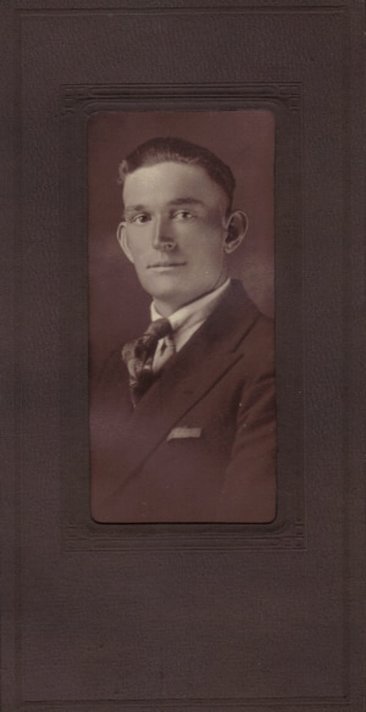
OBITUARY-THE TABLE ROCK ARGUS
FEBRUARY 22, 1918
THE FIRST SOLDIER OF TABLE ROCK CALLED BY DEATH
There was consternation among the people of Table Rock Friday afternoon when word was received the Corporal John LeaRoy Brown had died that morning at Camp Cody, Deming, N.M., and that the body would be brought back to Table Rock to Table Rock for burial.
A day or two before, Mrs. Hester Frank, his aunt, had received word that he was very sick with pneumonia, but this was not generally known by the people. The body arrived here Monday afternoon, accompanied by the brother, Foy Brown.
John LeaRoy Brown was born in Table Rock, being a son of Elmer and Nora Brown; he was educated in our public schools, and after the death of his mother made his home with his aunt, Mrs. Hester (Smith) Frank, for some years. He joined his father at Hopkins, Minn., for a few years, but returned to Nebraska.
When war was declared, he was one of the first to volunteer and become a member of Company K, and was sent to Omaha, where he was made a Corporal, later he was transferred to Battery E. 127th Field Artillery and sent to Camp Cody, N.M. He was afflicted with measles, tonsilites and pneumonia and suffered a relapse of the latter disease which resulted in his death.
Lea served his country in Company C., 1st. Regiment, Minnesota National Guard from 1913 to 1915. He later served as Corporal in Company K., 4th. Regiment, Nebraska national Guard, from which he received an honorable discharge at Fort Crook, August 4, 1917.
Prior to his release, he heard the call of President Wilson for volunteers, and on May 14, 1917, enlisted for active service in the great world's democracy campaign, and was given the rank of Corporal in Battery E., 127th Field Artillery at Camp Cody, Deming, N.M.
During his preparation for the front, he contracted pnumonia, measles and toncilitis, and a second attack of pnumonia, from which he never recovered. Lea gave his life for his country and the great princple of world wide brotherhood as surely as though had fallen in the trenches or gone "over the top," at Camp Cody, February 15, 1918 at the age of 23 years, 11 months and 27 days.
He was popular with his associates, both in the army and at home, and the sadness of his death is felt on every side.
Corporal John LeaRoy, son of Mr. and Mrs. Elmer S. Brown, was born at Table Rock, Nebr., March 18, 1894. Just prior to his mother's death, Lea, who was then five years old, was taken by his aunt, Mrs. Hester Frank, to what he came to know as, and what he since has Called "home".
He united with the Methodist Episcopal church of Table Rock, February 6, 1910, and has since remained a member.
Funeral services were held in the M. E. Church at 2 o'clock on Tuesday afternoon, conducted by Rev. S. Taft, assisted by Revs. S. E. Seabright and J. E. Darby.
During the day the flags in the city park and the school grounds were at half mast, and because of the lovable character of the deceased and the other fact that he was the first one of our soldier boys of the present war to die at his post of duty, the capacity of the church was taxed to it's utmost to accommodate those who deserved to attend the service and pay a last tribute of respect to his memory. The business houses were closed and the services were impressive. The words of commendation from the speakers for the bravery and devotion of the deceased to his country's cause and his upright life, were reechoed in the minds and hearts of the audience. The singing by the quartette was in harmony with the ceremony. The floral offerings were elaborate and beautiful, an American flag wrought in flowers being especially beautiful. The remains were buried in the Table Rock cemetery and were given a military escort by the Home Guards.
To the sorrowing relatives whose loved one gave his life to his county, the Argus extends the sympathy of the entire community.
Corporal John LeaRoy, son of Mr. and Mrs. Elmer S. Brown, was born at Table Rock, Nebr., March 18, 1894. Just prior to his mother's death, Lea, who was then five years old, was taken by his aunt, Mrs. Hester Frank, to what he came to know as, and what he since has called "home".
A father, Elmer S. Brown, of Hopkins, Minn., a brother, Foy, of Battery E, 127 Field Artillery, Camp Cody; a step-sister, Dorothy, of Hopkins, Minn.; three uncles, Perry M. Smith, of Bedford, Nebr., William R. Myers, of Lewsiton, Nebr., and N. S. Myers, of Table Rock, Nebr., and an aunt, Mrs. Hester Frank, of Table Rock, Nebr., who has been "mother" in the deepest and most sublime sence of the term; together with more distant relatives and a host of friends remain to mourn his departure.
FEBRUARY 22, 1918
THE FIRST SOLDIER OF TABLE ROCK CALLED BY DEATH
There was consternation among the people of Table Rock Friday afternoon when word was received the Corporal John LeaRoy Brown had died that morning at Camp Cody, Deming, N.M., and that the body would be brought back to Table Rock to Table Rock for burial.
A day or two before, Mrs. Hester Frank, his aunt, had received word that he was very sick with pneumonia, but this was not generally known by the people. The body arrived here Monday afternoon, accompanied by the brother, Foy Brown.
John LeaRoy Brown was born in Table Rock, being a son of Elmer and Nora Brown; he was educated in our public schools, and after the death of his mother made his home with his aunt, Mrs. Hester (Smith) Frank, for some years. He joined his father at Hopkins, Minn., for a few years, but returned to Nebraska.
When war was declared, he was one of the first to volunteer and become a member of Company K, and was sent to Omaha, where he was made a Corporal, later he was transferred to Battery E. 127th Field Artillery and sent to Camp Cody, N.M. He was afflicted with measles, tonsilites and pneumonia and suffered a relapse of the latter disease which resulted in his death.
Lea served his country in Company C., 1st. Regiment, Minnesota National Guard from 1913 to 1915. He later served as Corporal in Company K., 4th. Regiment, Nebraska national Guard, from which he received an honorable discharge at Fort Crook, August 4, 1917.
Prior to his release, he heard the call of President Wilson for volunteers, and on May 14, 1917, enlisted for active service in the great world's democracy campaign, and was given the rank of Corporal in Battery E., 127th Field Artillery at Camp Cody, Deming, N.M.
During his preparation for the front, he contracted pnumonia, measles and toncilitis, and a second attack of pnumonia, from which he never recovered. Lea gave his life for his country and the great princple of world wide brotherhood as surely as though had fallen in the trenches or gone "over the top," at Camp Cody, February 15, 1918 at the age of 23 years, 11 months and 27 days.
He was popular with his associates, both in the army and at home, and the sadness of his death is felt on every side.
Corporal John LeaRoy, son of Mr. and Mrs. Elmer S. Brown, was born at Table Rock, Nebr., March 18, 1894. Just prior to his mother's death, Lea, who was then five years old, was taken by his aunt, Mrs. Hester Frank, to what he came to know as, and what he since has Called "home".
He united with the Methodist Episcopal church of Table Rock, February 6, 1910, and has since remained a member.
Funeral services were held in the M. E. Church at 2 o'clock on Tuesday afternoon, conducted by Rev. S. Taft, assisted by Revs. S. E. Seabright and J. E. Darby.
During the day the flags in the city park and the school grounds were at half mast, and because of the lovable character of the deceased and the other fact that he was the first one of our soldier boys of the present war to die at his post of duty, the capacity of the church was taxed to it's utmost to accommodate those who deserved to attend the service and pay a last tribute of respect to his memory. The business houses were closed and the services were impressive. The words of commendation from the speakers for the bravery and devotion of the deceased to his country's cause and his upright life, were reechoed in the minds and hearts of the audience. The singing by the quartette was in harmony with the ceremony. The floral offerings were elaborate and beautiful, an American flag wrought in flowers being especially beautiful. The remains were buried in the Table Rock cemetery and were given a military escort by the Home Guards.
To the sorrowing relatives whose loved one gave his life to his county, the Argus extends the sympathy of the entire community.
Corporal John LeaRoy, son of Mr. and Mrs. Elmer S. Brown, was born at Table Rock, Nebr., March 18, 1894. Just prior to his mother's death, Lea, who was then five years old, was taken by his aunt, Mrs. Hester Frank, to what he came to know as, and what he since has called "home".
A father, Elmer S. Brown, of Hopkins, Minn., a brother, Foy, of Battery E, 127 Field Artillery, Camp Cody; a step-sister, Dorothy, of Hopkins, Minn.; three uncles, Perry M. Smith, of Bedford, Nebr., William R. Myers, of Lewsiton, Nebr., and N. S. Myers, of Table Rock, Nebr., and an aunt, Mrs. Hester Frank, of Table Rock, Nebr., who has been "mother" in the deepest and most sublime sence of the term; together with more distant relatives and a host of friends remain to mourn his departure.
HUGH DEHART (1891-1918)
He lost his life when he made a rush into "No Man's Land" to rescue an officer who had been wounded, a shell from the enemy hitting him causing instant death. |
our hugh dehart
a hero of the great war
a story by sharla sitzman
from the humboldt standard, november 8, 2018
The body of Hugh DeHart came home in 1921. He was a hero of the Great War, killed in Flanders fields less than two weeks before the Armistice on November 11, 1918. DeHart was at one time a Table Rock boy and indeed is buried here, but his draft registration card listed his home as the Todd Creek area near Elk Creek, and in a later list of Nebraska soldiers who served in the Great War he was listed as being from Humboldt. He thus belonged to us all. He was one of “ours.”
Hugh DeHart Ellsworth was the oldest of the four children of Levi and Mertie Dehart. He was called Hughie as a boy but Ellsworth sometimes in adulthood. He was born in Red Cloud, Nebraska in 1891, the year that a teenaged Willa Cather moved to the area with her family. Cather was eventually to write a book set in World War I called “One of Ours.” It won the Pulitzer prize in 1923, two years after Hugh’s body was returned to Nebraska.
In Cather’s book, she followed the course of the life of her fictional hero, a Nebraska farmer, from youth to college to marriage to the war Over There. It ended with his dramatic and heroic death in battle. What was Hugh DeHart’s own course of life that would end in battle?
Hugh entered the service at age 27. It was mid-1918 and the United States had been in the war for over a year. He was described on his draft card as a farmer of medium height and build, with light brown hair and eyes.
He was a private in the 361st Infantry Regiment of the 91st Division. The 91st Division was known as the Wild West Division, most of the men being from the western states. He sailed for France with the last of the 91st Division on September 1, 1918. In a September 18 letter, he wrote his mother that he had arrived safely.
Almost immediately he was sent to the front, to the greatest battle of World War I, which took place on a 440-mile front between the Meuse River and the Argonne Forest and listed for almost two months. The Meuse-Argonne offensive began in late September with an attack by the Wild West Division that met strong resistance. The offensive lasted until the Armistice but before its end, Hugh and the 9th Division were ordered to Belgium. Before they left, though, a general order was issued that recognized that Hugh’s regiment on the 91st Division, the 361st, had “received its baptism of blood and fire” and never once faltered. The order, read as our Hugh and the other soldiers of the 361st stood at assembly, was accompanied by words about the fallen. “We must today bring back to our presence the memories of our friends and comrades who have fallen in this cause…We see them again as they were while among us, upright, stalwart, and brave…We are lonely without them and we grieve deeply that they must have been sacrificed.”
The 91st was then sent to the Flanders area of Belgium. Flanders was the Flemish (Dutch-speaking) part of Belgium and had seen many deaths in the early part of the war. The famous poem about the poppies in Flanders fields had been written two years before the Division arrived. The Americans found the land different than the France that they left because it had not been heavily shelled. The land was cultivated, especially with turnips, “large, white, sweet, juice turnips, fully ripe” a regimental history fondly recalls, and perhaps our Hugh enjoyed them as did the other soldiers, as a favorite side dish.
Hugh’s regiment, the 361st, was sent to Waereghem, Belgium and then on October 29 marched on toward Krieknhoek. They moved in three columns. A regimental history described how the men, which still included our Hugh DeHart, traveled. “New regulations had been made whereby each man now wore his overcoat and carried his raincoat, one blanket, and certain specified small articles in a prescribed manner in or on his pack. Squad rolls were made up containing the remaining blankets, clothing, and equipment. Packs were inspected for security and appearance before each march. The rolling kitchens, water carts, and ration carts were divided into trains that each followed their own battalion.”
At Krieknhoek, the day was spent quietly but the men knew that the next day they were to move forward to get into position to an attack on the ancient city of Audenarde, an area headquarters for the Germans. The next day, on October 30, they took up the march to Audenarde. Belgians lined the road, cheering and offering food and wine. At dusk they halted and the rolling kitchens served supper. They were in place for battle.
The morning of October 31 found the Wild West Division in the center of the assault line in the battle for Audenarde. Another regiment, the 362nd, took the front line, with Hugh’s regiment, the 361st , held behind in reserve. The 362nd met with strong machine gun resistance and the 361st could not move forward, being required to maintain a distance of 1,000 meters behind them. Hugh and his fellow soldiers of the 361st were thus not on the firing line. “Practically no hostile fire reached the regiment, and the men spent their time resting in the fields. Hot meals were served with all the regularity and ease that could be desired, and even tobacco reached the men.”
On November 1, 1918, the morning that our Hugh DeHart was to die, the Wild West Division closed in on the city of Audenarde. The night before, the Germans had issued an order that for each prisoner of the Division taken prisoner, there would be 18 days extra leave. However, the Germans were not taking prisoners that day. They opened with both long-range machine-gun fire and direct artillery fire. Losses were few because the men of the Division were widely deployed. Audenarde was not taken that day, but some of the soldiers of the 91st Division were able to enter, where civilians were “ecstatic in their welcome, the houses were thrown open, the soldiers urged to come inside and to be treated to wine, food, milk or whatever delicacy the establishment could boast.”
And on that day, a “clear and sunny” one, our Hugh DeHart was killed. The Argus in 1921 reported that it happened when he rushed into No Man’s Land to save an officer, but I found no records yay or nay. Since there was no trench warfare in that area, the existence of a No Man’s Land seems improbable. That he was killed trying to save another man bears no dispute. In 1921, they would have had more current information. There may have been a letter from someone in the unit, the telegram informing them of the circumstances of death. But did he die in the final advance toward Audenarde, or did he die upon entering the city?
DeHart’s parents saw the celebrations of the Armistice on November 11, 1918 not knowing that their son was dead. They had received Hugh’s September 18 letter that he had arrived safe but nothing more from him. They did not receive the news of his death until a telegram arrived in mid-December. They had spent six weeks living their daily lives not knowing that their son was dead and buried.
The 91st Division lost many thousands of men during the war. As was widely the case, most who died were buried in or close by the battlefield where they had fallen. However, after the war, many of their families wanted their bodies returned to the States. The military was at first unprepared for the gargantuan and gruesome task of recovering bodies from graves and shipping them back home. The work proceeded slowly. Thus, for several years, our Hugh DeHart lay in Flanders fields, where “poppies blow.” Most of the bodies to be moved were either returned to the United States by about 1921, as had been that of Hugh DeHart, or moved to American military cemeteries that had been established at several places.
The 1921 funeral services at the Table Rock Methodist Church were auspicious. The Argus reported that as a mark of respect the stores were closed during the services. The church “was crowded to capacity.” There were American Legion “boys” in uniform from Humboldt, Elk Creek, and Table Rock and 38 of the boys marched in line to the Table Rock cemetery, where the Legion, led by Joe Rausch of the Humboldt post, conducted the services at graveside. `
Hugh’s parents received “honor rolls” from Black Jack Pershing, President Woodrow Wilson, President Raymond Poincare of France, and from Sam McKelvie, the governor of Nebraska (who was married to a Table Rock girl, Flossie Groves). Although Hugh’s parents had moved away, they and their son Earl were later buried next to Hugh, a 27-year-old farmer whose life was lost in the Great War. It was 100 years ago this week. You probably never heard of him. That’s a shame, because he was worth knowing.
Hugh DeHart Ellsworth was the oldest of the four children of Levi and Mertie Dehart. He was called Hughie as a boy but Ellsworth sometimes in adulthood. He was born in Red Cloud, Nebraska in 1891, the year that a teenaged Willa Cather moved to the area with her family. Cather was eventually to write a book set in World War I called “One of Ours.” It won the Pulitzer prize in 1923, two years after Hugh’s body was returned to Nebraska.
In Cather’s book, she followed the course of the life of her fictional hero, a Nebraska farmer, from youth to college to marriage to the war Over There. It ended with his dramatic and heroic death in battle. What was Hugh DeHart’s own course of life that would end in battle?
Hugh entered the service at age 27. It was mid-1918 and the United States had been in the war for over a year. He was described on his draft card as a farmer of medium height and build, with light brown hair and eyes.
He was a private in the 361st Infantry Regiment of the 91st Division. The 91st Division was known as the Wild West Division, most of the men being from the western states. He sailed for France with the last of the 91st Division on September 1, 1918. In a September 18 letter, he wrote his mother that he had arrived safely.
Almost immediately he was sent to the front, to the greatest battle of World War I, which took place on a 440-mile front between the Meuse River and the Argonne Forest and listed for almost two months. The Meuse-Argonne offensive began in late September with an attack by the Wild West Division that met strong resistance. The offensive lasted until the Armistice but before its end, Hugh and the 9th Division were ordered to Belgium. Before they left, though, a general order was issued that recognized that Hugh’s regiment on the 91st Division, the 361st, had “received its baptism of blood and fire” and never once faltered. The order, read as our Hugh and the other soldiers of the 361st stood at assembly, was accompanied by words about the fallen. “We must today bring back to our presence the memories of our friends and comrades who have fallen in this cause…We see them again as they were while among us, upright, stalwart, and brave…We are lonely without them and we grieve deeply that they must have been sacrificed.”
The 91st was then sent to the Flanders area of Belgium. Flanders was the Flemish (Dutch-speaking) part of Belgium and had seen many deaths in the early part of the war. The famous poem about the poppies in Flanders fields had been written two years before the Division arrived. The Americans found the land different than the France that they left because it had not been heavily shelled. The land was cultivated, especially with turnips, “large, white, sweet, juice turnips, fully ripe” a regimental history fondly recalls, and perhaps our Hugh enjoyed them as did the other soldiers, as a favorite side dish.
Hugh’s regiment, the 361st, was sent to Waereghem, Belgium and then on October 29 marched on toward Krieknhoek. They moved in three columns. A regimental history described how the men, which still included our Hugh DeHart, traveled. “New regulations had been made whereby each man now wore his overcoat and carried his raincoat, one blanket, and certain specified small articles in a prescribed manner in or on his pack. Squad rolls were made up containing the remaining blankets, clothing, and equipment. Packs were inspected for security and appearance before each march. The rolling kitchens, water carts, and ration carts were divided into trains that each followed their own battalion.”
At Krieknhoek, the day was spent quietly but the men knew that the next day they were to move forward to get into position to an attack on the ancient city of Audenarde, an area headquarters for the Germans. The next day, on October 30, they took up the march to Audenarde. Belgians lined the road, cheering and offering food and wine. At dusk they halted and the rolling kitchens served supper. They were in place for battle.
The morning of October 31 found the Wild West Division in the center of the assault line in the battle for Audenarde. Another regiment, the 362nd, took the front line, with Hugh’s regiment, the 361st , held behind in reserve. The 362nd met with strong machine gun resistance and the 361st could not move forward, being required to maintain a distance of 1,000 meters behind them. Hugh and his fellow soldiers of the 361st were thus not on the firing line. “Practically no hostile fire reached the regiment, and the men spent their time resting in the fields. Hot meals were served with all the regularity and ease that could be desired, and even tobacco reached the men.”
On November 1, 1918, the morning that our Hugh DeHart was to die, the Wild West Division closed in on the city of Audenarde. The night before, the Germans had issued an order that for each prisoner of the Division taken prisoner, there would be 18 days extra leave. However, the Germans were not taking prisoners that day. They opened with both long-range machine-gun fire and direct artillery fire. Losses were few because the men of the Division were widely deployed. Audenarde was not taken that day, but some of the soldiers of the 91st Division were able to enter, where civilians were “ecstatic in their welcome, the houses were thrown open, the soldiers urged to come inside and to be treated to wine, food, milk or whatever delicacy the establishment could boast.”
And on that day, a “clear and sunny” one, our Hugh DeHart was killed. The Argus in 1921 reported that it happened when he rushed into No Man’s Land to save an officer, but I found no records yay or nay. Since there was no trench warfare in that area, the existence of a No Man’s Land seems improbable. That he was killed trying to save another man bears no dispute. In 1921, they would have had more current information. There may have been a letter from someone in the unit, the telegram informing them of the circumstances of death. But did he die in the final advance toward Audenarde, or did he die upon entering the city?
DeHart’s parents saw the celebrations of the Armistice on November 11, 1918 not knowing that their son was dead. They had received Hugh’s September 18 letter that he had arrived safe but nothing more from him. They did not receive the news of his death until a telegram arrived in mid-December. They had spent six weeks living their daily lives not knowing that their son was dead and buried.
The 91st Division lost many thousands of men during the war. As was widely the case, most who died were buried in or close by the battlefield where they had fallen. However, after the war, many of their families wanted their bodies returned to the States. The military was at first unprepared for the gargantuan and gruesome task of recovering bodies from graves and shipping them back home. The work proceeded slowly. Thus, for several years, our Hugh DeHart lay in Flanders fields, where “poppies blow.” Most of the bodies to be moved were either returned to the United States by about 1921, as had been that of Hugh DeHart, or moved to American military cemeteries that had been established at several places.
The 1921 funeral services at the Table Rock Methodist Church were auspicious. The Argus reported that as a mark of respect the stores were closed during the services. The church “was crowded to capacity.” There were American Legion “boys” in uniform from Humboldt, Elk Creek, and Table Rock and 38 of the boys marched in line to the Table Rock cemetery, where the Legion, led by Joe Rausch of the Humboldt post, conducted the services at graveside. `
Hugh’s parents received “honor rolls” from Black Jack Pershing, President Woodrow Wilson, President Raymond Poincare of France, and from Sam McKelvie, the governor of Nebraska (who was married to a Table Rock girl, Flossie Groves). Although Hugh’s parents had moved away, they and their son Earl were later buried next to Hugh, a 27-year-old farmer whose life was lost in the Great War. It was 100 years ago this week. You probably never heard of him. That’s a shame, because he was worth knowing.
additional information about hugh dehart
draft registration card
december 20, 1918 argus
Soldiers from nebraska who were killed in action. hugh's name is listed in the middle column
Hugh's obituary
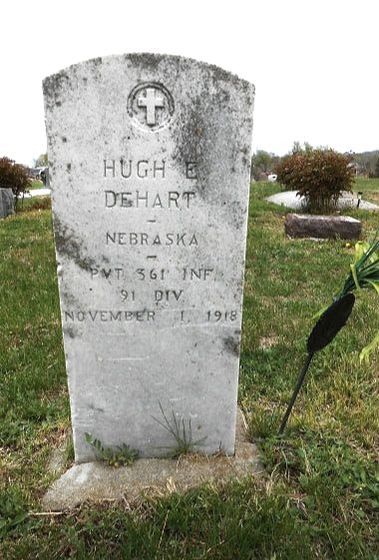 In the Table Rock Cemetery
In the Table Rock Cemetery
Table Rock Argus, May 20, 1921.
Hugh DeHart, Hero
The body of Hugh DeHart arrived in Table Rock on Tuesday evening, and was taken to the Methodist church, where it was held until the funeral, which was held at 2:30 o'clock on Wednesday afternoon.
The young man lost his life when he made a rush into "No Man's Land" to rescue an officer who had been wounded, a shell from the enemy hitting him causing instant death. The body was sent back home for burial.
Funeral services were held in the Methodist church, conducted by Rev. R. b. E. Hill, who preached a sermon eulogistic of the boys who made the supreme sacrifice in defense of world liberty, and a tribute to this by who had gone from our midst at his country's call, and now a sorrowing community was giving him the last sad rites.
The church was crowded to capacity, there being American Legion boys in uniform from Humboldt, Elk Creek, and Table Rock, and this order took charge of the services at the grave, conducted by Joe Rauh of the Humboldt post. Thirty eight of the boys marched in line. As a mark of respect the business houses of the city were closed during the funeral services.
To the sorrowing parents the sympathy of the community is extended but their sorrow is assuaged to some extent by the knowledge that their boy gave his life in a hero's effort to do his best.
Hugh Elsworth DeHart was born at Red Cloud, Nebraska, June 25, 1891. He came to table Rock some years ago and later his parents came here to make their home.
On July 21, 1918 he entered the service of his country in the world war at Tecumseh and was sent to Camp Dodge, Iowa, and later to Camp Mills, New Jersey. He sailed for France September 1, 1918, with his regiment and on the 18th his mother received a card that he had safely arrived. This is the last word received until the telegram announcing his death, which was not received until 14th of December.
Almost immediately on arriving in France he was sent to the front and was killed in action at Audraned, Belgium November 1, 1918.
His parents have received five honor rolls from General Pershing, President Wilson of the United States, from the President of France and Governor McKelvie of Nebraska.
He is survived by his parents, Mr. and Mrs. L. L. DeHart of Nebraska City, two brothers and one sister
Hugh DeHart, Hero
The body of Hugh DeHart arrived in Table Rock on Tuesday evening, and was taken to the Methodist church, where it was held until the funeral, which was held at 2:30 o'clock on Wednesday afternoon.
The young man lost his life when he made a rush into "No Man's Land" to rescue an officer who had been wounded, a shell from the enemy hitting him causing instant death. The body was sent back home for burial.
Funeral services were held in the Methodist church, conducted by Rev. R. b. E. Hill, who preached a sermon eulogistic of the boys who made the supreme sacrifice in defense of world liberty, and a tribute to this by who had gone from our midst at his country's call, and now a sorrowing community was giving him the last sad rites.
The church was crowded to capacity, there being American Legion boys in uniform from Humboldt, Elk Creek, and Table Rock, and this order took charge of the services at the grave, conducted by Joe Rauh of the Humboldt post. Thirty eight of the boys marched in line. As a mark of respect the business houses of the city were closed during the funeral services.
To the sorrowing parents the sympathy of the community is extended but their sorrow is assuaged to some extent by the knowledge that their boy gave his life in a hero's effort to do his best.
Hugh Elsworth DeHart was born at Red Cloud, Nebraska, June 25, 1891. He came to table Rock some years ago and later his parents came here to make their home.
On July 21, 1918 he entered the service of his country in the world war at Tecumseh and was sent to Camp Dodge, Iowa, and later to Camp Mills, New Jersey. He sailed for France September 1, 1918, with his regiment and on the 18th his mother received a card that he had safely arrived. This is the last word received until the telegram announcing his death, which was not received until 14th of December.
Almost immediately on arriving in France he was sent to the front and was killed in action at Audraned, Belgium November 1, 1918.
His parents have received five honor rolls from General Pershing, President Wilson of the United States, from the President of France and Governor McKelvie of Nebraska.
He is survived by his parents, Mr. and Mrs. L. L. DeHart of Nebraska City, two brothers and one sister
RALPH FISHER (1896-1918)
He was a Navy man. He died of illness aboard the famous Red Cross hospital ship "Mercy," meningitis as a result of influenza.
According to the U. S. Navy casualty list, he died of meningitis aboard "the Mercy Ship," a famous Red Cross hospital where casualties from both sides were treated. He was a pharmacist's mate. According to an article in the Table Rock Argus, he died of influenza. Meningitis was a complication of influenza, which usually progressed to pneumonia.
the navy casualty list -- ralph fisher is the second entry
ada fisher (1876-1918)
A Red Cross nurse who died of influenza
|
Ada Fisher was a cousin of Ralph Fisher, and they died only weeks apart. Ada died in Omaha, and while her parents (Clinton and Cora Malone Fisher) lived in Table Rock, and the announcement of her death said that her body was being brought to Table Rock for burial, she was buried in Pawnee City.
In the Pawnee County courthouse are two huge bronze tablets listing all of the men and women of Pawnee County who served. A star marks those who died. There are 17 stars. Ada Fisher's name is on one of the tablets, and hers is one of those 17 stars. We do not have a picture of her Ada was the oldest of six children born to Jesse and Emily Fisher, between 1876 and 1893. They were from Tazewell County, Illinois, where a number of other Table Rock people came from, such as Charlie McCourtney. They were there at the time of the 1880 census. By 1885, they were in Sheridan precinct, southeast of Table Rock. In 1900, the family still lived in Sheridan Precinct. Ada was 24 and she and all of her siblings were living at home. Ada and her sister Elsie Imo Fisher were listed as school teachers. Ada's brother Mason died in 1918. He was in the Navy and stationed in San Francisco. His cause of death is listed simply as "drowned." Ada's sister Mary was the last to die, in 1993. |
october 25, 1918 argus |
not ada fisher, but this is how she would have dressed. |
MERreN HAYS (1895-1919)
Soon after his arrival "over there" he was put in active service and saw many fierce, hard battles. |
|
BRAVE SOLDIER LAD SUCCUMBS
Private Merren E. Hays Buried on French Soil A telegram was received by Mr. and Mrs. Robert Hays announcing the death of their son, Private Merren E. Hays, who went to the colors October 2, 1917, being stationed at Camp Funston, Kansas, until June 4, 1918, from which place he was sent to Camp Mills, and on June 28, 1918, started over seas. Soon after his arrival "over there" he was put in active service and saw many fierce, hard battles. On October 31, 1918, Merren was slightly gassed but reported as getting along nicely and would soon be on his way home but then word was received of his death. He leaves to mourn his departure his father and mother, three sisters, Miss Golda, at home, Mrs. George Snoke and Mrs. Gilbert Hendrix, residing near Humboldt; two brothers, Jay who is in the Navy, and Ralph, who resides near Liberal, Kansas; together with a host of friends. From the Table Rock Argus, Table Rock, NE., March 7, 1919 (Pg.5) |
A letter confirming his death reads as follows:
Base Hospital 61, A.P.O. 909, January 20, 1919 Mrs. Martha Hays, Table Rock, Nebraska. My Dear Mrs. Hays: I am a representative of the Home Communication Service of the American Red Cross, and I write to extend to you the sympathy of our organization for the loss of your son, Merren. I knew him personally, for it is one of my duties to become acquainted with the boys in the hospitals to which I have been assigned, and after seeing them day after day, talking to, writing letters for, reading and singing for them, and supplying them with fresh fruits and delicacies they crave, I naturally become very much attached and take a personal interest in them, and when God sees fit to take on of them away, I grieve as I would for one of my own loved ones. I only wish that I might be with you to offer consolation and help to a dear mother grieving for her boy. Know always though that God is with you in your hour of need. With you always for He loves you and with you only to bless and comfort. He is a wonderful friend and I could never have held up under the many sad sights that I have seen in this hospital had it not been for my faith and knowledge of His presence. I suppose you know that Merren contracted cerebral spinal meningitis and was ill only about 5 days. His doctor, Lt. Losher, and his nurse, Miss Kuchna, did everything possible to save him and we all hoped that he would recover, but God willed otherwise and on January 17, 1919 at 4:40 p.m. he passed away. Will it be of any consolation to you in your deep sorrow to know that he did not suffer and that he was surrounded by comrades who loved him for himself alone and admired him for the brave and courageous lad that he was. I attended the funeral and I only wish you might have been with me, for the service was very impressive and Chaplain Batchelor rendered a very beautiful sermon. His casket was covered with an American flag, salute fired and "taps" sounded as his casket was lowered in to the grave. He is buried in our American burial plot at Beaune Cote d'Or, France, grave number 292, and his grave is registered with the Grave Registration Bureau of the A.E.F. and will be properly cared for by the bureau, as well as by the French people who bank the graves with flowers every day in their desire to show their appreciation and sympathy. Your son's personal effects will be forwarded through the Personal Effects Bureau of the A.E.F. as promptly as conditions will permit. Please accept the heartfelt sympathy of the Red Cross and of myself personally for your heavy loss and if there is any further information you desire I shall be most please to write you again. Your very sincerely, Virginia Helms, Searcher |
Merren E. Hays was born December 21, 1895, near Table Rock. He was called to the colors October 2, 1917 being stationed at Camp Funston, until June 1918 and was sent to Camp Mills; on June 28, 1918 was started overseas. On October 31 he was slightly gassed.
After the armistice was signed and he was expecting to be sent home, he was taken sick and taken to the hospital in France, where he died on January 17, 1919. The body was shipped back home where it arrived Wednesday of last week and funeral services were held in the Christian Church on Thursday afternoon, conducted by Rev. A.L.Ogden. The church was crowded to its capacity and business houses closed as a testimony to his memory. One of his favorite songs was "Sweet Hour of Prayer" and the quartette sang this as one of its numbers.He leaves to mourn his departure, his father, mother,two brothers and three sisters, one of whom was his twin. He died in the service of his country, in a foreign land, but his memory will be cherished as one of those whose life went out in defense of a world's freedom. From the Table Rock Argus, Table Rock, NE. Jan. 28, 1921(Pg.1) |
JOHN MICHAL (1894-1918)
Killed in an explosion several days after the armistice was signed.
charles n. schick
|
Sadly, we know nothing about him at this time, other than his family lived in Table Rock around that time and that he died of disease. His name is listed in a compendium titled Soldiers of World War I: Soldiers of the Great War. It lists soldiers state by state. In the Nebraska list, those who died of disease are listed, followed by those who died in combat. Schick's name is listed in the former, in the first column, almost to the bottom. However, in a list of military death notices in the periodical Nebraska History & Pioneer Record he is listed as killed in action. The periodical list identifies the dates of the death notices only, and the date for Schick's death notice was November 28, 1918.
|
Where is our Charles N. Schick buried? There is such a person buried at the Meuse-Argonne military cemetery in France, but a York list identifies that Charles N.Schick as from there, as a member of the 2nd Division,5th Machine Gun Battalion.
|
william a. rush
? - 1919
|
Sadly, this is another person that we know know nothing about. His name appears in a "killed in action" list of casualties of the Great War, listing him as being from Table Rock. It says, simply, "Rush, William A., Table Rock, Feb. 14, 1919."
|
WORLD WAR II
ronald boston (1917-1944)
 In the American Cemetery in Manila
In the American Cemetery in Manila
He was one of 76,000 prisoners surrendered to the Japanese when Bataan fell in the Phillipines. He survived the Bataan death march and almost the war. He died when toward the end of the war the Japanese began evacuating prisoners of war to the mainland. The ship he was on was not marked as bearing POWs and was torpedoed.
lavelle giles (1925-1945)
LaVelle Giles
He graduated from high school in 1943. In 1945, he was a radioman on a B-17 bomber that went missing after a bombing mission in Germany. He was in the 100th Group of the 350th Bombardment Squadron.
august 8, 1944 -- a wedding
He went into the Army Air Force in September 1943. After several state side posts, he was shipped out to England. He was able to get to Table Rock before leaving, and there he married his sweetheart, Lillian Covauilt, on August 8, 1944 They did not want to wait, in case he did not come back.
She was the teacher at the Blacklaw Country School, which was on the south side of Highway 4 near where Larry & Karen Gilbert now live.
As a newly-wed, Lillian started the school term with these students: Back row: Lillian, Richard Dobrovolny, and Ardyce Fritch. Front row, Gary, Robert, and Donald Bedea.
She was the teacher at the Blacklaw Country School, which was on the south side of Highway 4 near where Larry & Karen Gilbert now live.
As a newly-wed, Lillian started the school term with these students: Back row: Lillian, Richard Dobrovolny, and Ardyce Fritch. Front row, Gary, Robert, and Donald Bedea.
february 3, 1945 -- mia after a bombing run. .
LaVelle was a radio man on a B-17 bomber crew.
On February 3, 1945, he was reported missing. The bomber had participated in a bombing mission over Berlin, "what newspapers and commentators described as a 300-mile-long string of bombers and fighters over Berlin. At the time accounts of the tremendous bombing said there was little if any German fighter opposition, but that sections of the Nazi target threw up savage amounts of anti-aircraft fire."
He was presumed killed in action.
Over a decade later, LaVelle's body was brought back to Pawnee County. According to a newspaper article of the time, his remains were found in a prisoner of war cemetery and eventually positively identified.
He was buried in the Pawnee City Cemetery. He had been born there and lived there when young before the family moved to Table Rock. His extended family was from there, apparently.
Lillian did find happiness again when she married Johnny Bowen in 1949.
LaVelle was 20 when he died. Lillian lived to be 86. .
On February 3, 1945, he was reported missing. The bomber had participated in a bombing mission over Berlin, "what newspapers and commentators described as a 300-mile-long string of bombers and fighters over Berlin. At the time accounts of the tremendous bombing said there was little if any German fighter opposition, but that sections of the Nazi target threw up savage amounts of anti-aircraft fire."
He was presumed killed in action.
Over a decade later, LaVelle's body was brought back to Pawnee County. According to a newspaper article of the time, his remains were found in a prisoner of war cemetery and eventually positively identified.
He was buried in the Pawnee City Cemetery. He had been born there and lived there when young before the family moved to Table Rock. His extended family was from there, apparently.
Lillian did find happiness again when she married Johnny Bowen in 1949.
LaVelle was 20 when he died. Lillian lived to be 86. .
September 12, 1957
leo hastings (1921-1942)
Leo was with his brother Charles on Guadalcanal. Charles was helpless when Leo was wounded then killed:
Suddenly a shell tore into the earth ahead of [Charles] and his brother Leo fell, a gaping wound in his thigh. Crawlng out of his foxhole, he ran toward the stricken figure and had almost reached him when another shell landed between them.... |
Leo went to school in Table Rock. His brother Charles graduated from Table Rock, but the family moved away before Leo's graduation. Leo is buried here, along with other family members going back to his great grandfather John Whippletree Hastings, who was a Civil War veteran.
Arlan Kalina (1920-1945)
JOE E. KARAS, jr. (1922-1944)
An official message from the War Department Sunday to Mr. and Mrs. Joe Karas announced the death of their son, Lt. Joe E. Karas, Jr., while on a mission over Vienna, Austria, on Oct. 17th, 1944. He had been previously reported missing in action since that date, when his plane was seen by other members of the bombing group to catch on fire in the air.
He was with the 777th Bomber Squadron of the 464th Bomber Group. He was chief pilot on a B-24 Liberator.
The headstone in the cemetery south of Humboldt is just a marker. Joe Karas Jr. is buried in the National Cemetery at Jefferson Barracks, St. Louis, MO
From the Table Rock Argus, Nov. 2, 1944
Mr. and Mrs Joe Karas were notified by the War Department Tuesday morning, that their son, Lt. Joe E. Karas, is missing in action when his plane failed to return from a mission over Austria on October 17th. He had been overseas only a few weeks, and was based in Italy with the 777th Bomber squadron of the 464th bomber group.
Lt. Karas was believed to have been on his third or fourth mission from which he failed to return, having written his sister, Mrs. Lawrence Stehlik on October 12th that he had two missions to his credit. He was a Chief Pilot on a B-24 Liberator.
Lt. Karas had received his final training at the Air Base at Walla Walla, Washington prior to going overseas just recently.
From the Table Rock Argus, Feb. 16, 1945
An official message from the War Department Sunday to Mr. and Mrs. Joe Karas announced the death of their son, Lt. Joe E. Karas, Jr., while on a mission over Vienna, Austria, on Oct. 17th, 1944. He had been previously reported missing in action since that date, when his plane was seen by other members of the bombing group to catch on fire in the air.
According to their message, the German government had announced his death on October 17th to the International Red Cross, which, in turn notified the government. Further particulars are being sent by letter.
Lt. Karas was on his sixth mission when he met his death. A member of the 16th Air Force, he had been based in Italy with the 777th bomber squadron of the 464th bomber group.
Lt. Joe Karas, 22, was born at Table Rock, October 20, 1922, and graduated from Table Rock high school in 1939, after which he helped his father farm until he went to Cheyenne, Wyo., where he was employed as a sheetmetal worker of the United Air Lines.
He entered cadet training in November, 1942, completing his training and was awarded his wings at Blackland Field, Texas, on March 20, 1944.
Receiving his final training at the Air Base at Walla Walla, Wash., Lt. Karas arrived in Italy in September of last year.
Besides his parents, he is survived by one sister, Mrs. Lawrence Stehlik.
In early 1950, the remains of Lt. Joe E. Karas Jr. was returned from Austria and on Jan. 27th, 1950, interred in the Jefferson Barracks National Cemetery, Saint Louis, MO, plot 82, grave 125-D. It appears that the remains of the crew were mingled and buried together.
Mr. and Mrs Joe Karas were notified by the War Department Tuesday morning, that their son, Lt. Joe E. Karas, is missing in action when his plane failed to return from a mission over Austria on October 17th. He had been overseas only a few weeks, and was based in Italy with the 777th Bomber squadron of the 464th bomber group.
Lt. Karas was believed to have been on his third or fourth mission from which he failed to return, having written his sister, Mrs. Lawrence Stehlik on October 12th that he had two missions to his credit. He was a Chief Pilot on a B-24 Liberator.
Lt. Karas had received his final training at the Air Base at Walla Walla, Washington prior to going overseas just recently.
From the Table Rock Argus, Feb. 16, 1945
An official message from the War Department Sunday to Mr. and Mrs. Joe Karas announced the death of their son, Lt. Joe E. Karas, Jr., while on a mission over Vienna, Austria, on Oct. 17th, 1944. He had been previously reported missing in action since that date, when his plane was seen by other members of the bombing group to catch on fire in the air.
According to their message, the German government had announced his death on October 17th to the International Red Cross, which, in turn notified the government. Further particulars are being sent by letter.
Lt. Karas was on his sixth mission when he met his death. A member of the 16th Air Force, he had been based in Italy with the 777th bomber squadron of the 464th bomber group.
Lt. Joe Karas, 22, was born at Table Rock, October 20, 1922, and graduated from Table Rock high school in 1939, after which he helped his father farm until he went to Cheyenne, Wyo., where he was employed as a sheetmetal worker of the United Air Lines.
He entered cadet training in November, 1942, completing his training and was awarded his wings at Blackland Field, Texas, on March 20, 1944.
Receiving his final training at the Air Base at Walla Walla, Wash., Lt. Karas arrived in Italy in September of last year.
Besides his parents, he is survived by one sister, Mrs. Lawrence Stehlik.
In early 1950, the remains of Lt. Joe E. Karas Jr. was returned from Austria and on Jan. 27th, 1950, interred in the Jefferson Barracks National Cemetery, Saint Louis, MO, plot 82, grave 125-D. It appears that the remains of the crew were mingled and buried together.
1941 - a headstart in learning about planes
1941 -- HIS OBITUARY MENTIONS THAT HE WORKED FOR UNITED AIRLINES IN CHEYENNE, WYOMING, AS A SHEETMETAL WORKER. HERE HE IS AT THE VOCATIONAL AIRCRAFT SHEET METAL SCHOOL IN BEATRICE, A PAGE FROM ONE OF ARVID BLECHA'S PHOTO ALBUMS. IT HAS SOME TABLE ROCK PEOPLE LABELED....LESTER PENKAVA, JOE KARAS, ARVID, RUDY HORALEK, GEORGE BEDEA, AND EARL LOWE. ALSO ONE FROM HUMBOLDT (ROBERT HENDRIX) AND ONE FROM PAWNEE CITY (CHARLES STALEY).

1941 -- the Vocational Aircraft Sheet Metal School in Beatrice, a page from one of Arvid Blecha's photo albums. It has some Table Rock people labeled....Lester Penkava, Joe Karas, Arvid, Rudy Horalek, George Bedea, and Earl Lowe. Also one from Humboldt (Robert Hendrix) and one from Pawnee City (Charles Staley).
James Morrison (1922-1945)
A signalman on a ground crew, he died in a drowning accident in the Fulda River near Kassel,Germany, on July 18, 1945. He is buried in the Lorraine American Cemetery in St. Avoid, France. He was in the 900th Sig Depo Co. (AVN).
James was one of the large family of Dan and Sophia Morrison of Table Rock. He was born in 1922. He graduated from Table Rock in 1940. He and four brothers fought in World War 2, one of a number of Table Rock families with five sons in the war.
Jams married Betty Wilson on February 12, 1943. He went overseas after their marriage.
Jams married Betty Wilson on February 12, 1943. He went overseas after their marriage.
The Argus may have published a follow up, but it is not indexed so that it is difficult to find further information without having a publishing date.
the fulda river in kassel, germany
The Morrison kids who graduated from Table Rock, according to the records of the Table Rock-Steinauer Alumni Association:
1937 - Howard Morrison
1940- James Morrison
1942 - Raymond Morrison
1944 - Emmet Morrison
1947- Betty Morrison McWain
1937 - Howard Morrison
1940- James Morrison
1942 - Raymond Morrison
1944 - Emmet Morrison
1947- Betty Morrison McWain
clarence morton
A young farm boy serving on Corregidor is one of 11,000 who were surrendered to the Japanese after months of desperate defense.
ANTHONY NEDVED (? - 1945)
On D-Day -- January 9, 1945 -- the 6th division landed at Lingayen Gulf, on the Philippine island of Luzon. They pursued the Japanese into the Cahanatuan hills from January 17 - 21, 1945. It was on January 18 that Anthony Nedved was killed.
|
Anthony Nedved was a PFC in the 63rd Infantry, 6th Division. He died at Ft. William McKinley
According to the American Battle Monuments Commission -- which maintains American military cemeteries in foreign lands -hs is Buried at: Plot D Row 12 Grave 129<BR>Manila American Cemetery<BR>Manila, Philippines 1 Death Date: 18 Jan 1945 1 Memorial Cemetery: Manila American Cemetery 1 Memorial Country: Manila, Philippines 1 Memorial Location: Plot D Row 12 Grave 12 |
WASHINGTON.—The office of war information has released the following list of Nebraska men who have been killed or wounded or have been taken prisoner of war. Next of kin have been previously notified.
Army dead—Pacific……PFC. ANTHONY L. NEDVED, son of Mrs. Tena Nedved, Table Rock. Source: Lincoln Evening Journal (Lincoln, Nebraska), Friday, 23 March 1945, page 3. |
his family
He was born in Table Rock on February 17,1908. His father, Jeff Nedved, had been born in Bohemia in 1877. His mother Christina (Tina) was born in Table Rock to Bohemian-born parents. Tina was six years younger. Her maiden name was Broz. Antony he had a brother, Jim, who was three years younger. Between Anthony and Jim it appears that there was a brother Andrew, who died in 1920 at the age of 12.
The Nedveds lived a few miles north of Table Rock. Anthony graduated from Table Rock High School. He died far from home on the island of Luzon, in the Philippines, on January 18, 1945. His parents both died about 10 years later and are buried in the Bohemian Cemetery east of town
The Nedveds lived a few miles north of Table Rock. Anthony graduated from Table Rock High School. He died far from home on the island of Luzon, in the Philippines, on January 18, 1945. His parents both died about 10 years later and are buried in the Bohemian Cemetery east of town
in the army -- landed on luzon on d-day & killed in action when division was pursuing the japanese into the hills
We can guess at what Anthony's last year or so on earth was like by looking at what his regiment, the 63rd, was doing.
In the summer of 1943, the division went to Oahu for jungle training. In January 1944, they were off to Dutch New Guinea, where they saw heavy combat and then, their objective secured, garrisoned the area until December 1944.
On D-Day -- January 9, 1945 -- the division landed at Lingayen Gulf, on the Philippine island of Luzon. They pursued the Japanese into the Cahanatuan hills from January 17 - 21, 1945. It was on January 18 that Anthony Nedved was killed. He was only a few weeks shy of his 37th birthday. He is buried in the American Cemetery in Manila.
In the summer of 1943, the division went to Oahu for jungle training. In January 1944, they were off to Dutch New Guinea, where they saw heavy combat and then, their objective secured, garrisoned the area until December 1944.
On D-Day -- January 9, 1945 -- the division landed at Lingayen Gulf, on the Philippine island of Luzon. They pursued the Japanese into the Cahanatuan hills from January 17 - 21, 1945. It was on January 18 that Anthony Nedved was killed. He was only a few weeks shy of his 37th birthday. He is buried in the American Cemetery in Manila.
his brief obituaryTABLE ROCK ARGUS, Table Rock, Nebr., Thur. Feb. 15, 1945.
PFC. NEDVED KILLED IN ACTION ON LUZON ANTHONY NEDVED IS THIS COMMUNITY'S THIRD WAR CASUALTY; KILLED JAN. 18 Mr. and Mrs. Jeff Nedved, who live four miles north of Table Rock received the sad news of the death of their son, Pfc. Anthony Nedved, 37, in a War Department message received here Monday afternoon. The message stated that Pfc. Anthony Nedved had been killed in action on Luzon, which is the principle island of the Philippine group, on January 18th. Pfc. Nedved was a member of the Infantry, and only recently had been awarded the Combat Infantry Badge for "exemplary conduct in action." Nedved was born February 17, 1908, and attended the Table Rock school, graduating with the class of 1919. He is survived by his grieved parents and one brother, Jim, who lives in Virginia. |
a minor issueWhen did he graduate?
The death notice in the Argus reported he graduated in 1919 -- but he would have been only 11. The records of the Table Rock-Steinauer Alumni Association give the graduation date as 1928, but he would have been 19 or 20! The latter may be correct, though. His brother Jim appears in a photograph of the Junior Class of 1929, so would have been in the Class of 1930 (but it doesn't appear that he graduated from here.) |
what did he look like? we don't know. we have only a picture of his brother jim.
This is labeled as the Junior Class in 1929. Jim Nedved is in the third row back,far left. Perhaps Jim resembled his older brother. We have no other clue as to what Anthony looked like.
lawrence ward (1917 - 1942)
In the Table Rock Cemetery is a military tombstone In Memory of Lawrence Ward. This wording is used when the remains were not recovered.
Lawrence Ward did not grow up in Table Rock; he was from Colorado. However, it was home to his family, including his grandmother and great grandfather on his father's side and the Tibbets family on his mother's. Perhaps he spent time visiting family in Table Rock in the summer, as so many have done over the years.
His niece Earline Shaw gave us some information about him in December 2016:
Lawrence Ward did not grow up in Table Rock; he was from Colorado. However, it was home to his family, including his grandmother and great grandfather on his father's side and the Tibbets family on his mother's. Perhaps he spent time visiting family in Table Rock in the summer, as so many have done over the years.
His niece Earline Shaw gave us some information about him in December 2016:
Lawrence is my uncle and oldest son of John R and Ethel Tibbets Ward (my grandparents). |
Earline later wrote to provide more of the story:
When I was looking through some family stories today in regard to Uncle Lawrence, I found something that I’d never heard about before. |
kenneth wiar (1915-1946)
The Distinguished Flying Cross is awarded for "heroism or extraordinary achievement" in flight. In the southwest quarter of the cemetery lies Kenneth Wiar, recipient of the Distinguished Flying Cross.
Kenny Wiar did not die "in" the war, but we list him here because it is likely that he died as a result of the war. He committed suicide. In today's world, we are sensitive to the post-traumatic stress disorder suffered by combat veterans. The information published in the newspapers and anecdotal information suggests PTSD. The details of his death are not posted here, because it is life that mattered most. We know little enough about it.
1915, Kenneth Wiar was born in Table Rock; his folks were Oscar & Eva (Irwin) Wiar. his grandparents were John and Eleanor (Knipe Norris) Aylor.
1921, little Kenneth Wiar got a cut from a lilac bush.
Ken's family moved to Falls City, where he grew up and where he was a big high school football star. 1935, he was recruited to play football at the University of Nebraska.
1936, he got married and had kids.
WW2 finds him on an aircrew; he was MIA then reported alive -- as a POW, released in 1944. After a period in the reserves, he re-enlisted. Before his re-enlistment took effect, he committed suicide.
These photographs above were shared by his grand daughter Lori Wiar.
Kenny Wiar did not die "in" the war, but we list him here because it is likely that he died as a result of the war. He committed suicide. In today's world, we are sensitive to the post-traumatic stress disorder suffered by combat veterans. The information published in the newspapers and anecdotal information suggests PTSD. The details of his death are not posted here, because it is life that mattered most. We know little enough about it.
1915, Kenneth Wiar was born in Table Rock; his folks were Oscar & Eva (Irwin) Wiar. his grandparents were John and Eleanor (Knipe Norris) Aylor.
1921, little Kenneth Wiar got a cut from a lilac bush.
Ken's family moved to Falls City, where he grew up and where he was a big high school football star. 1935, he was recruited to play football at the University of Nebraska.
1936, he got married and had kids.
WW2 finds him on an aircrew; he was MIA then reported alive -- as a POW, released in 1944. After a period in the reserves, he re-enlisted. Before his re-enlistment took effect, he committed suicide.
These photographs above were shared by his grand daughter Lori Wiar.

